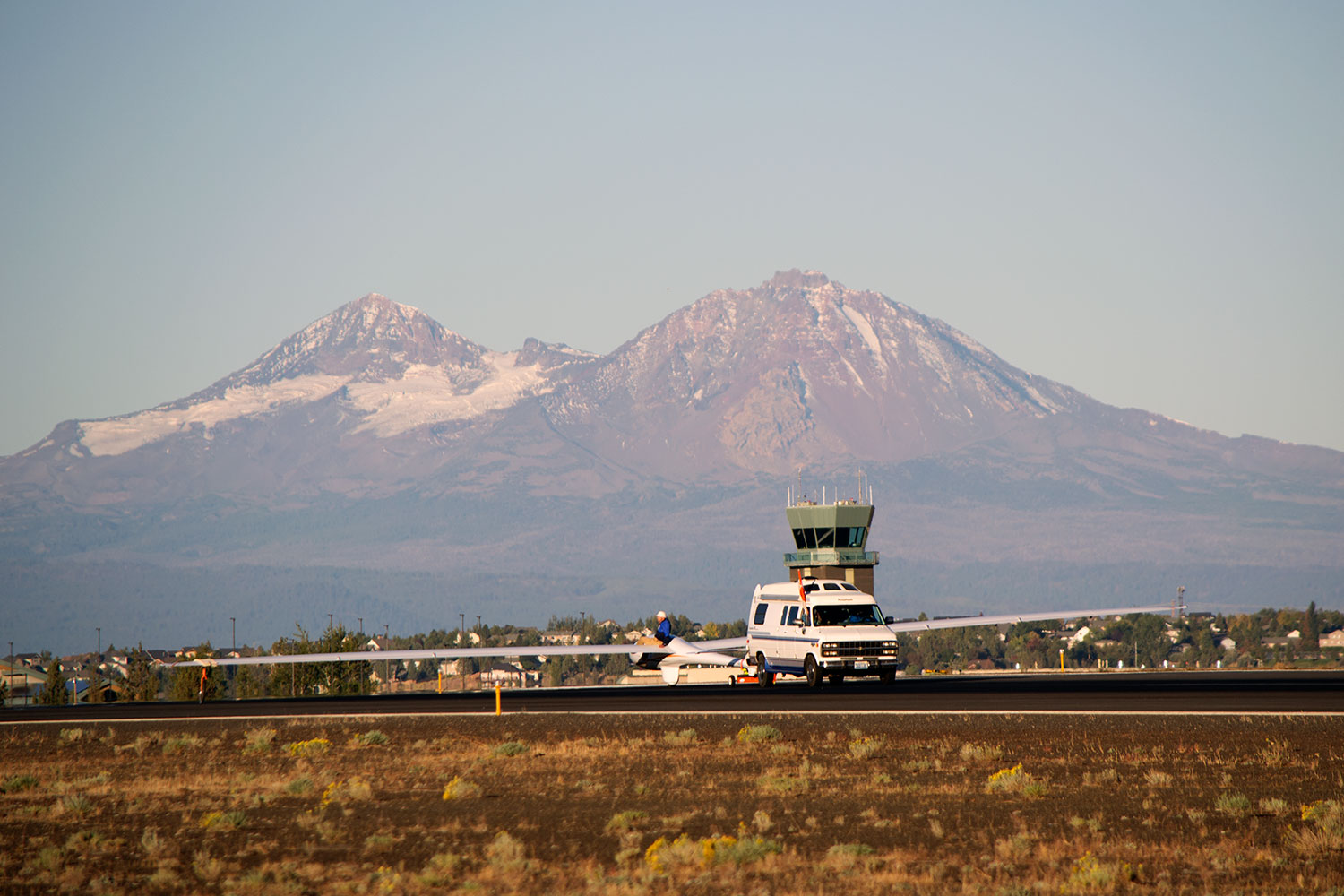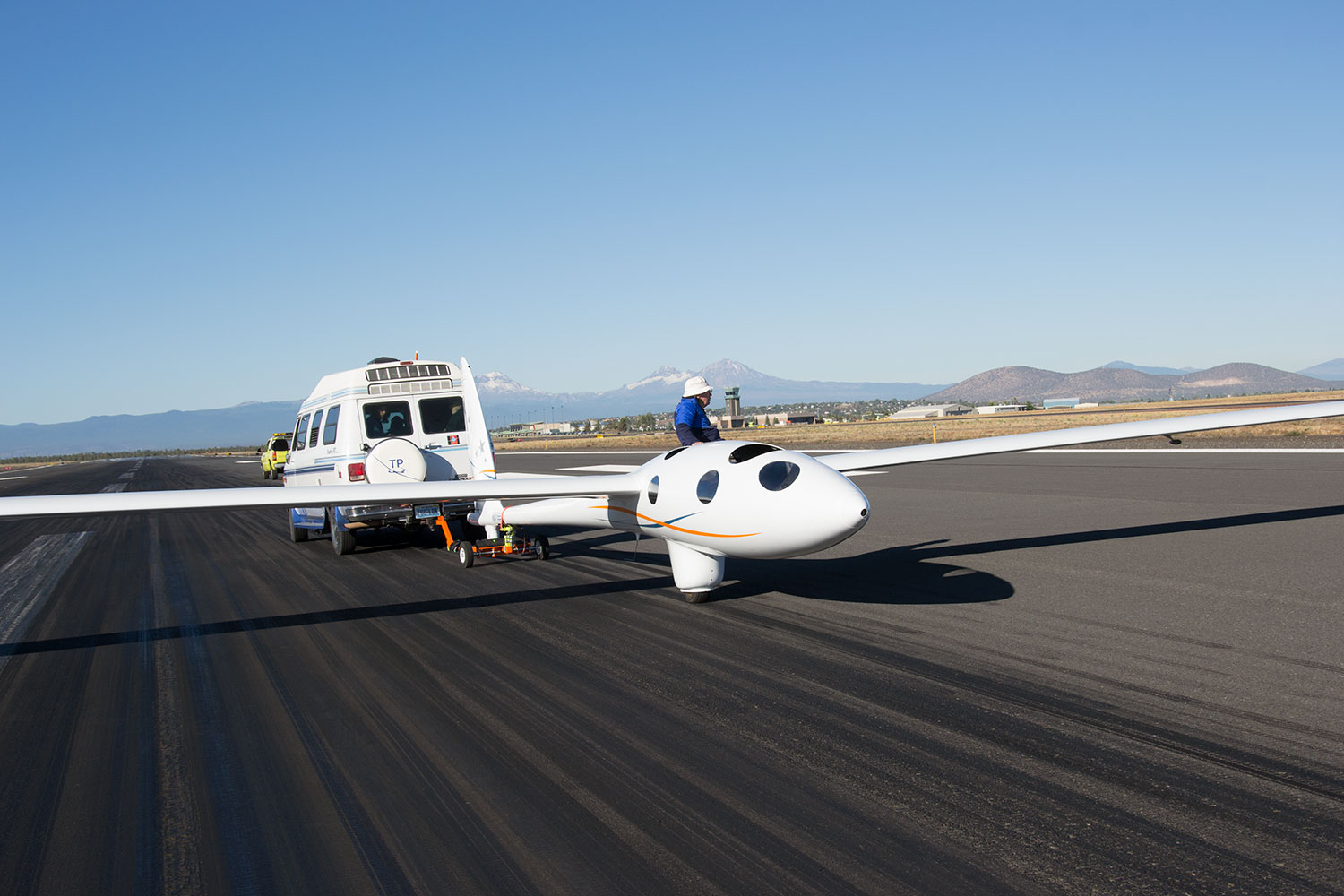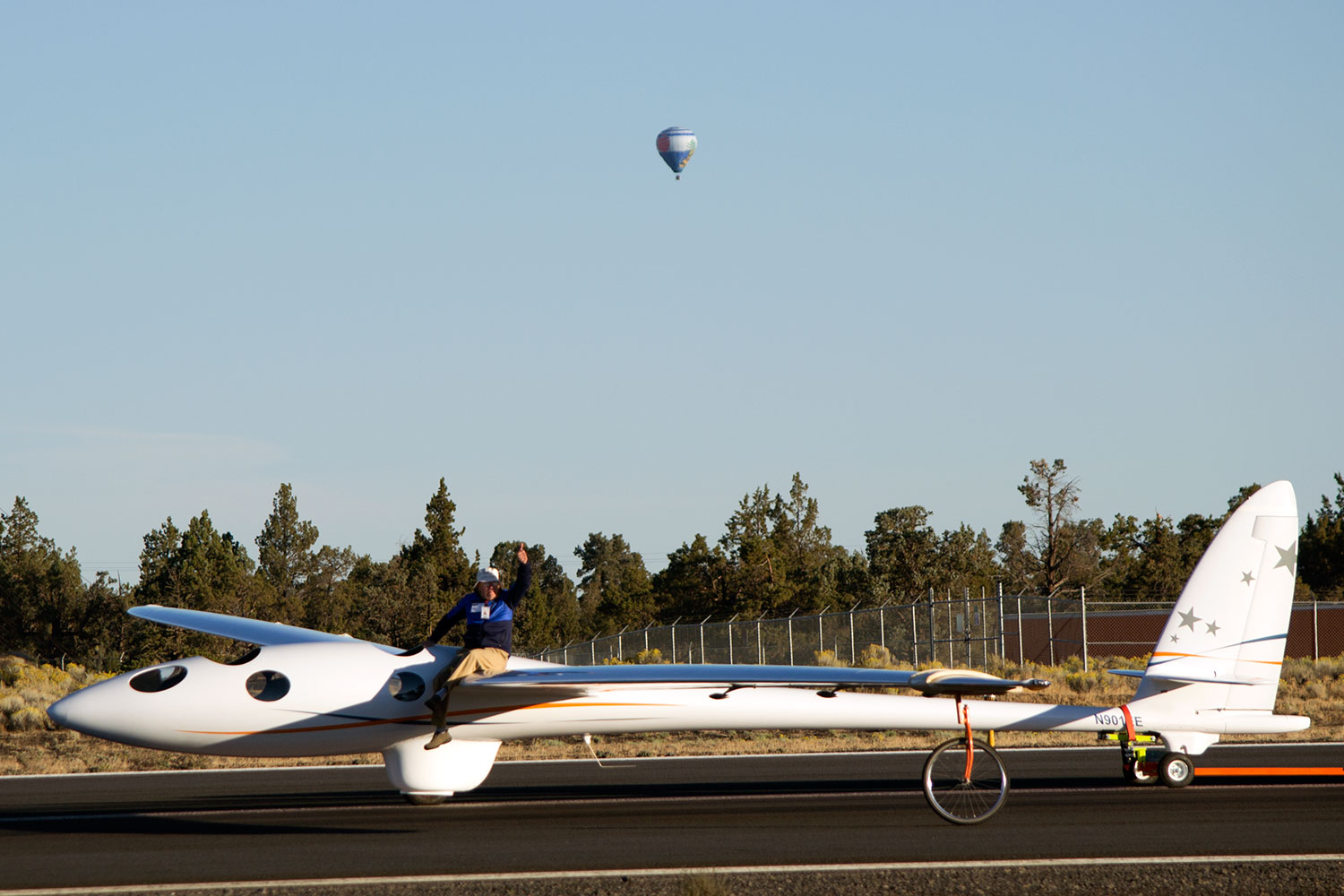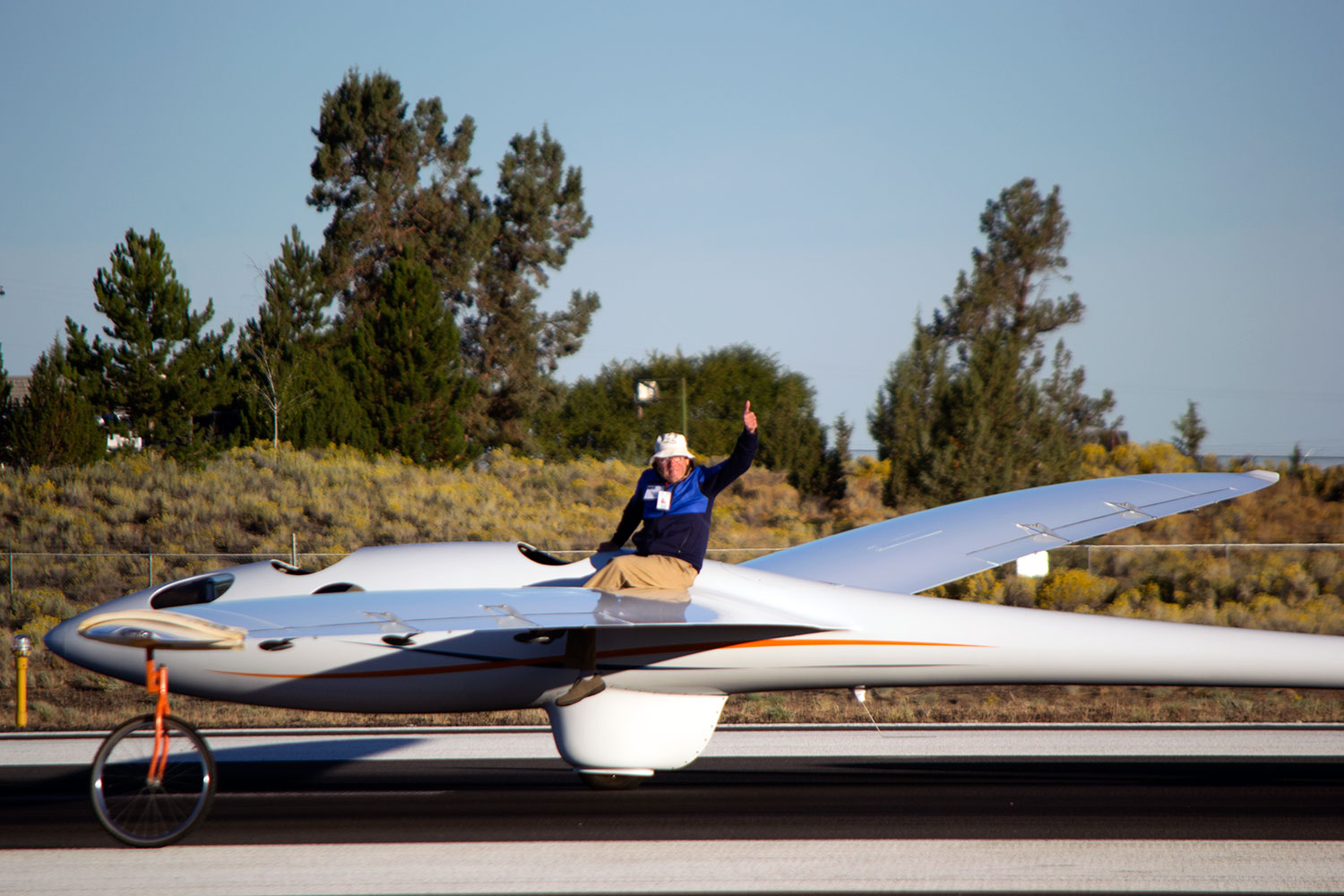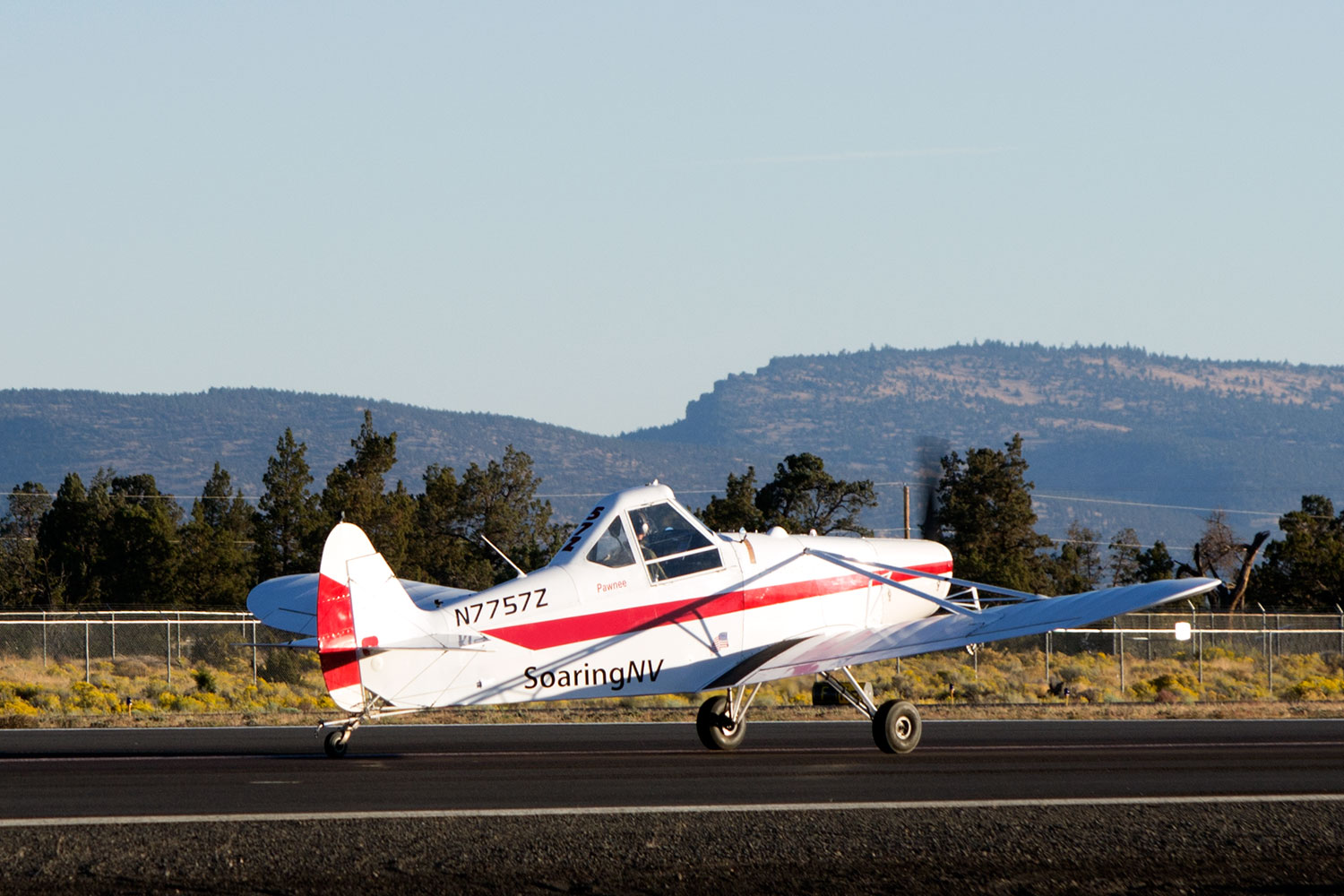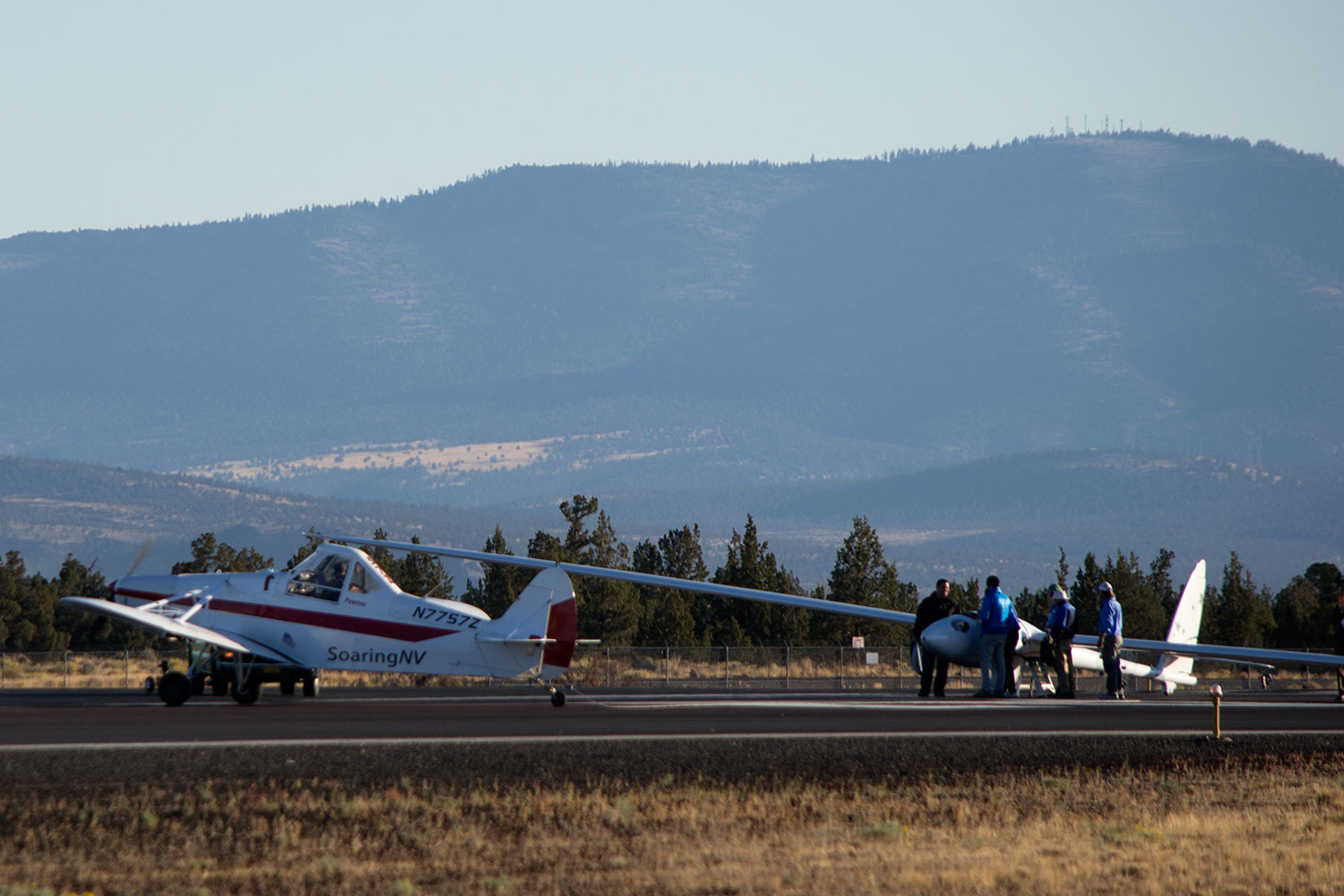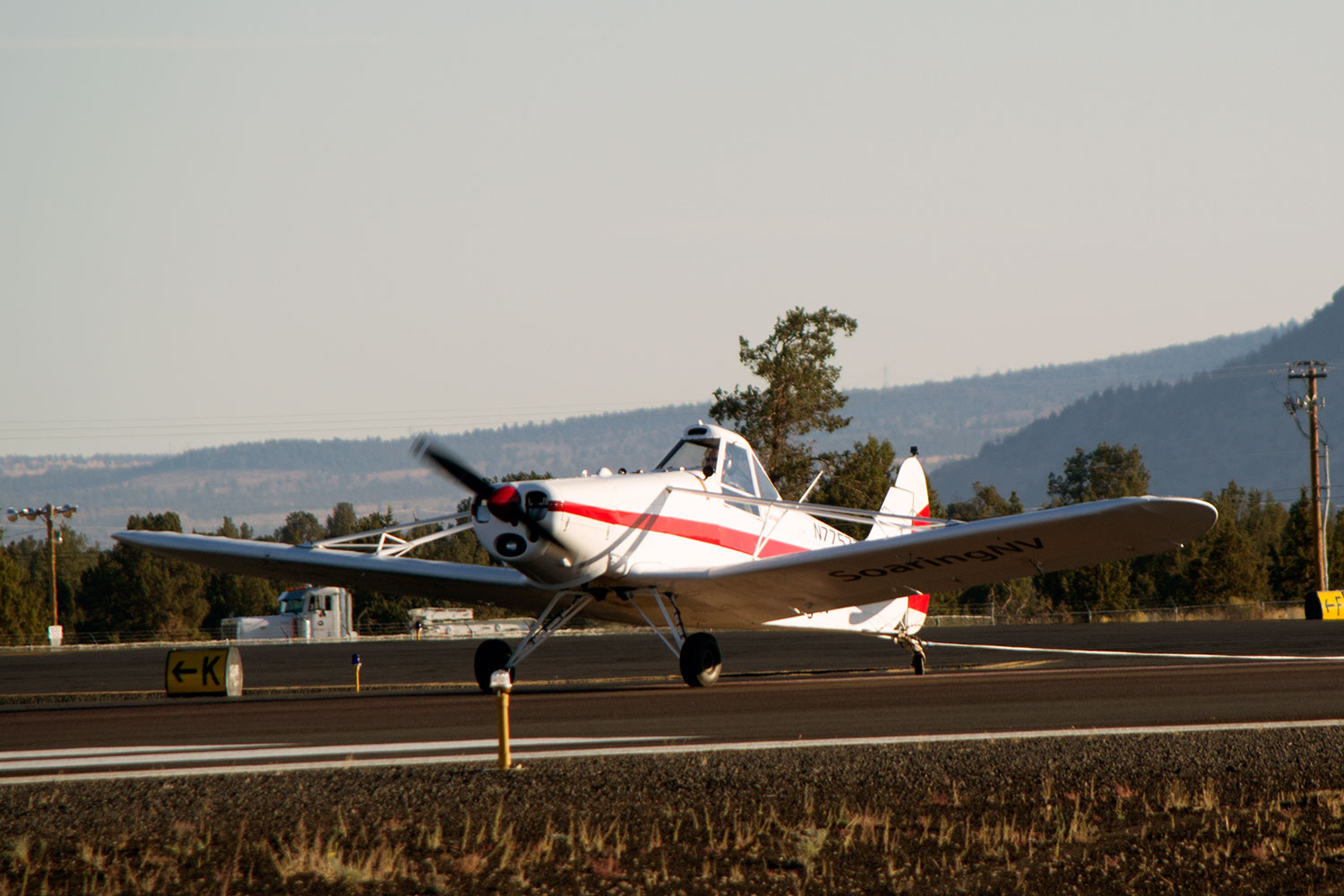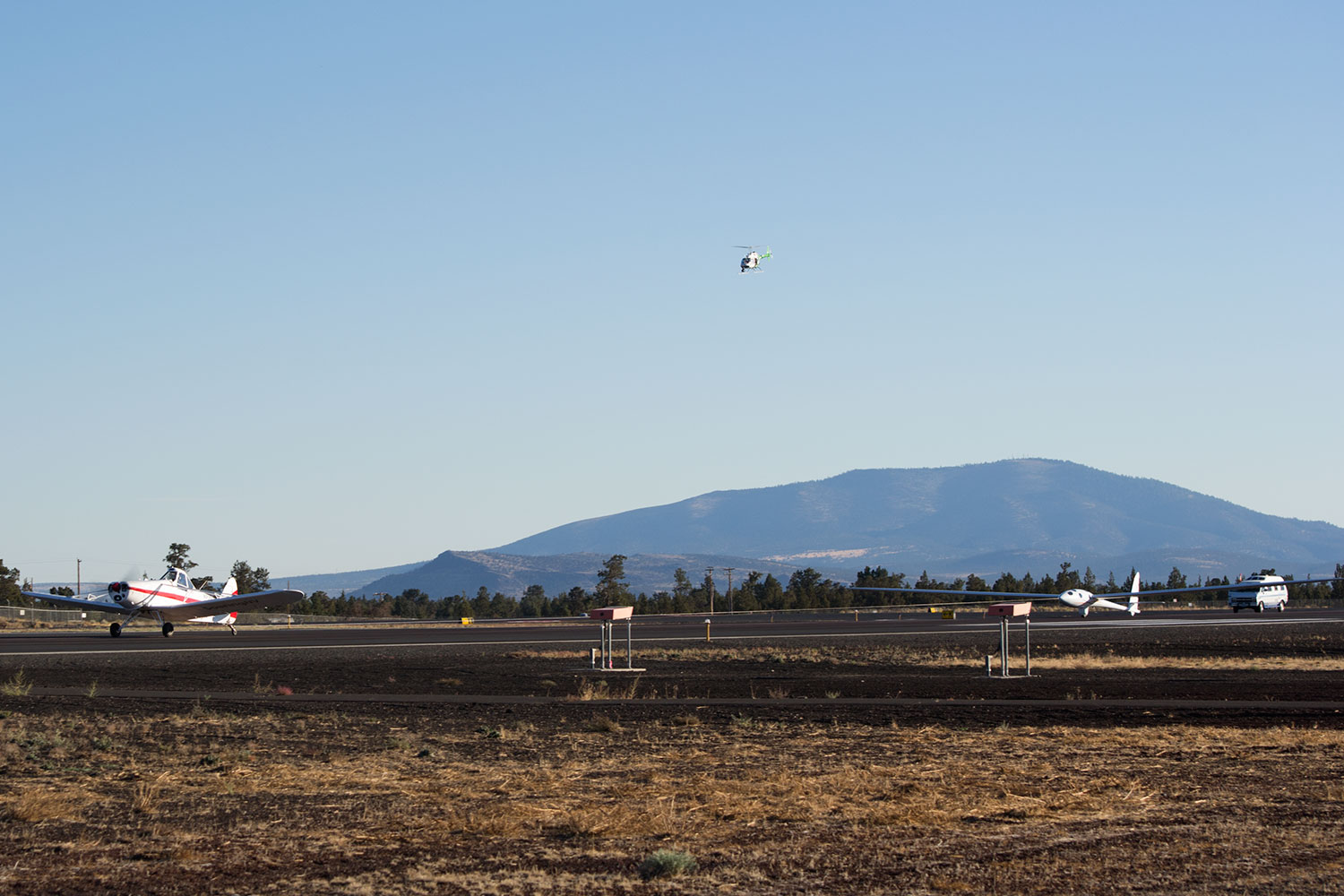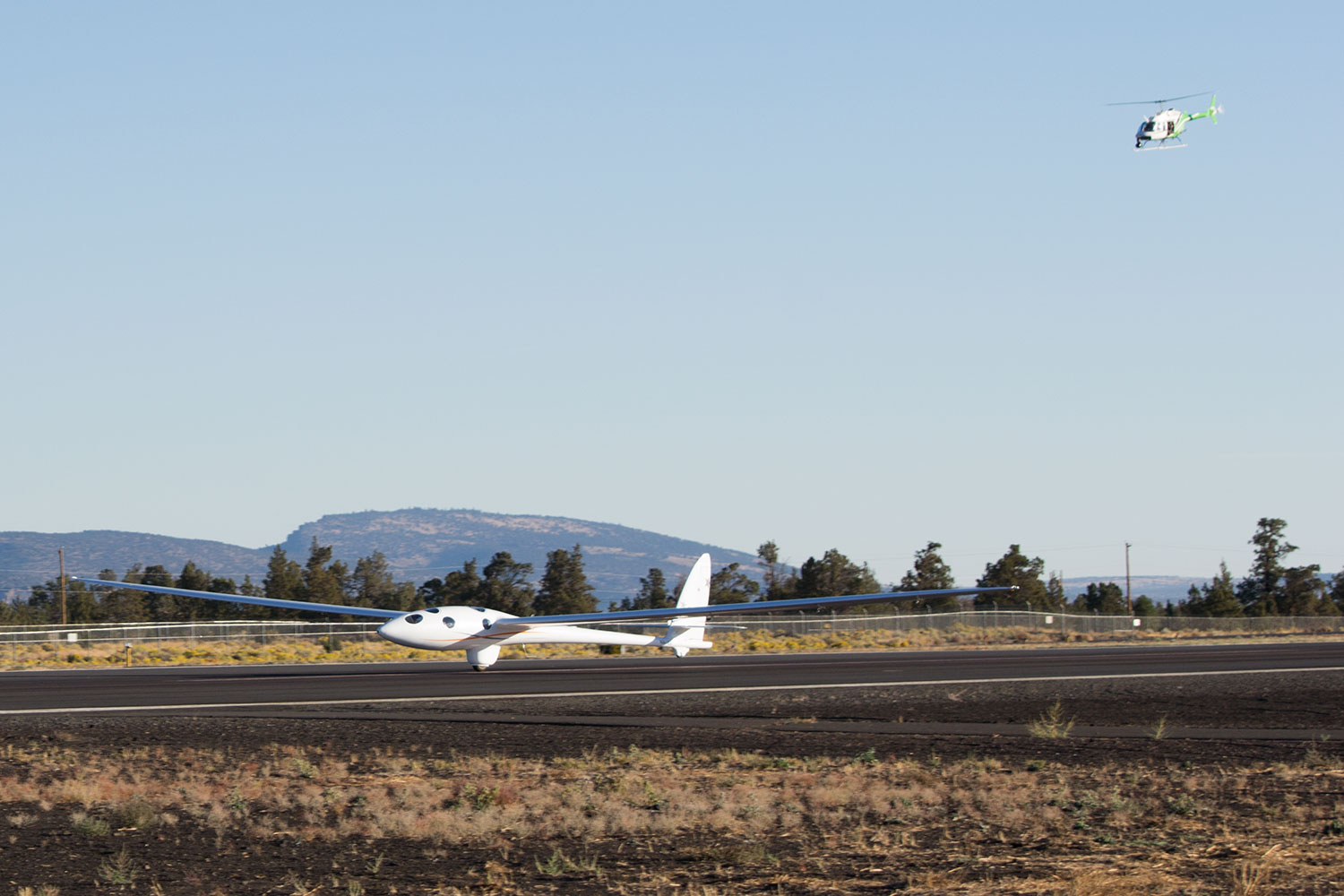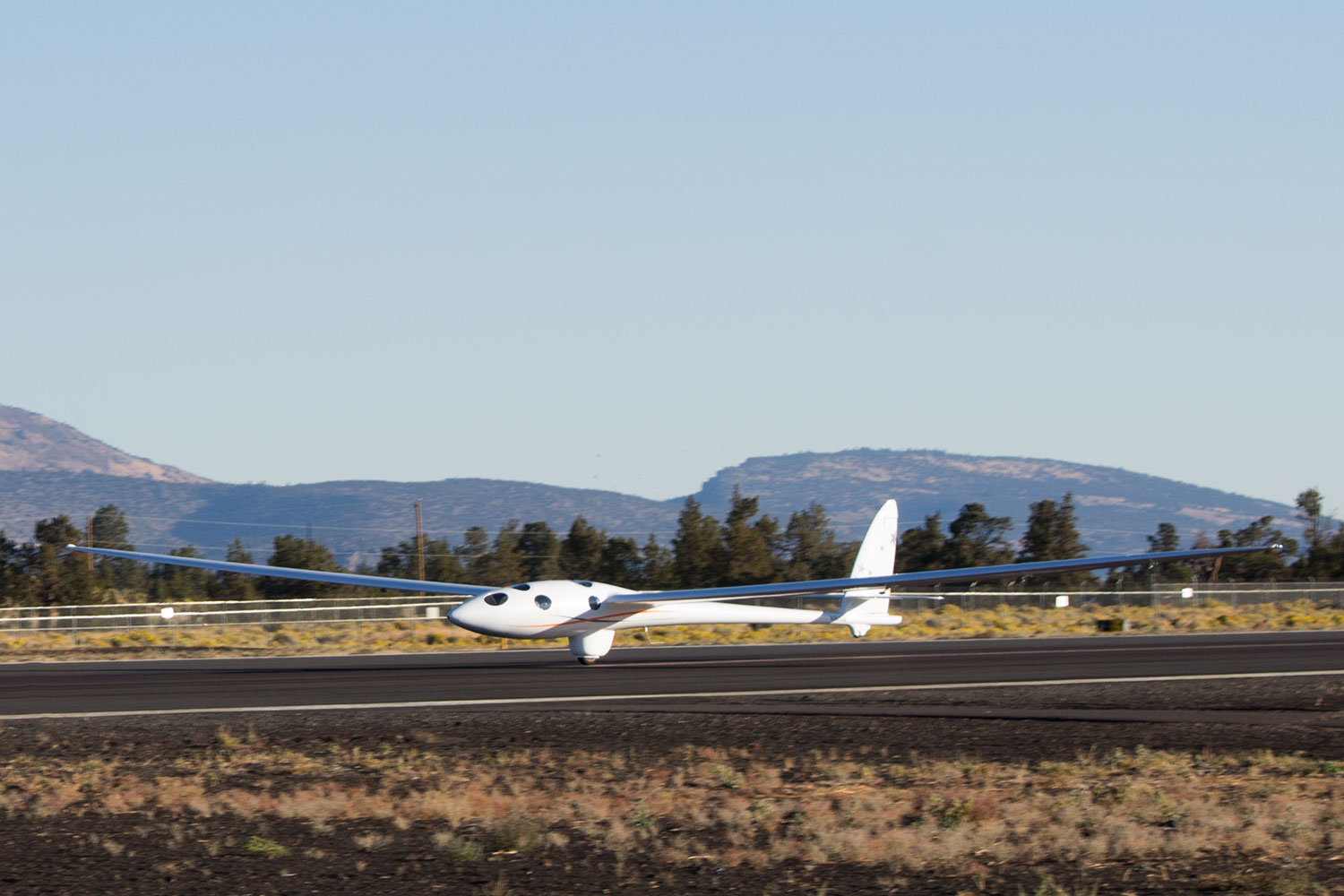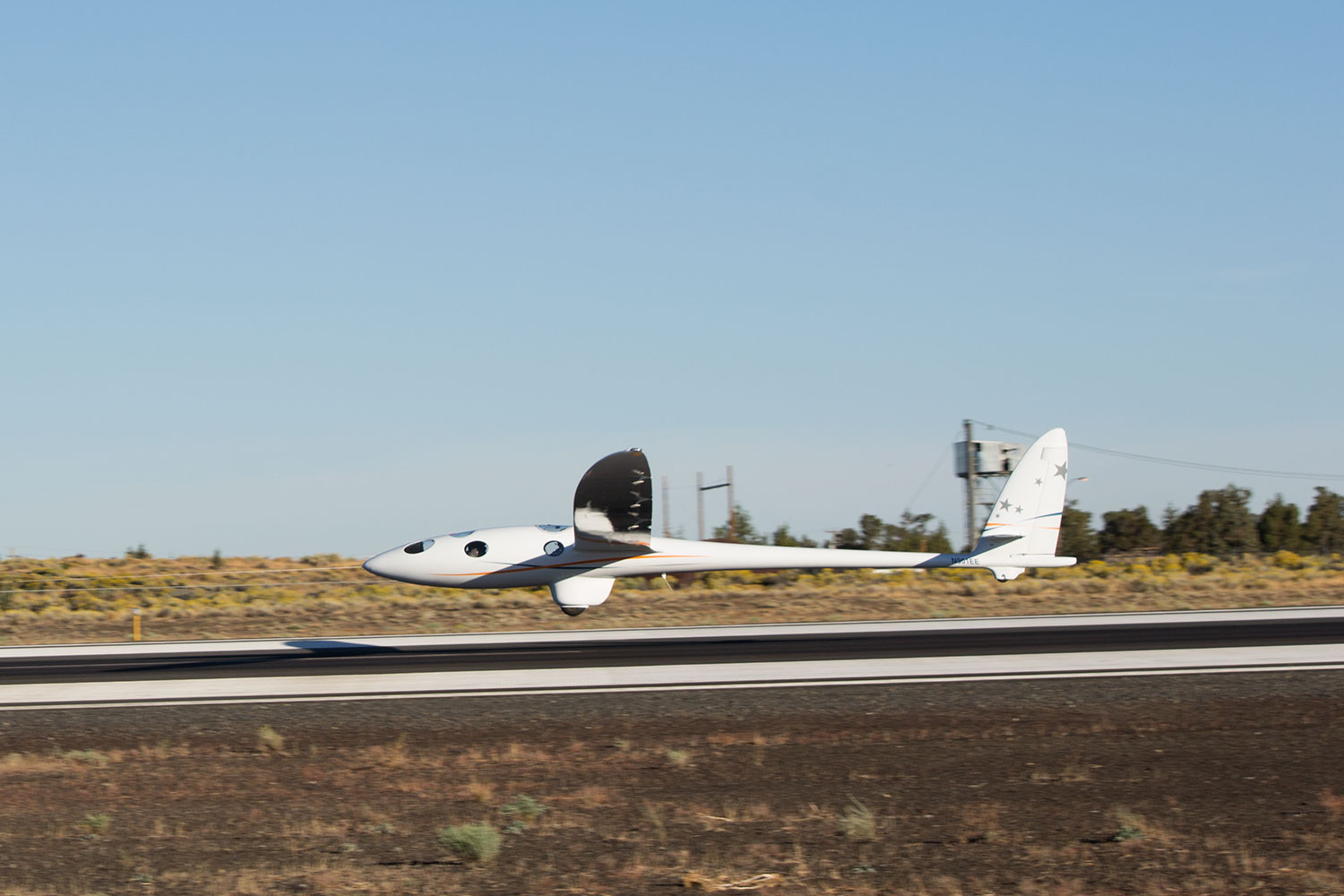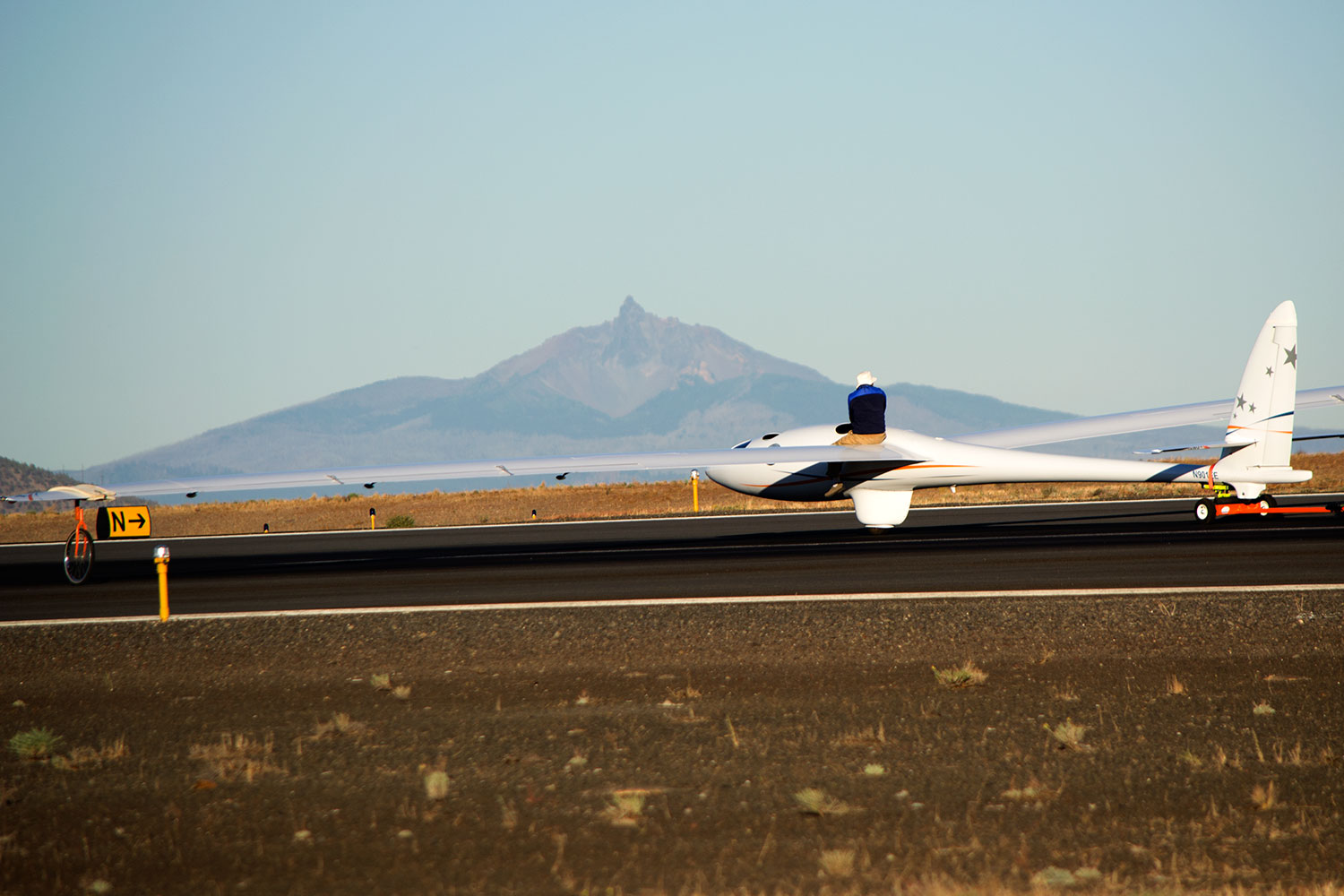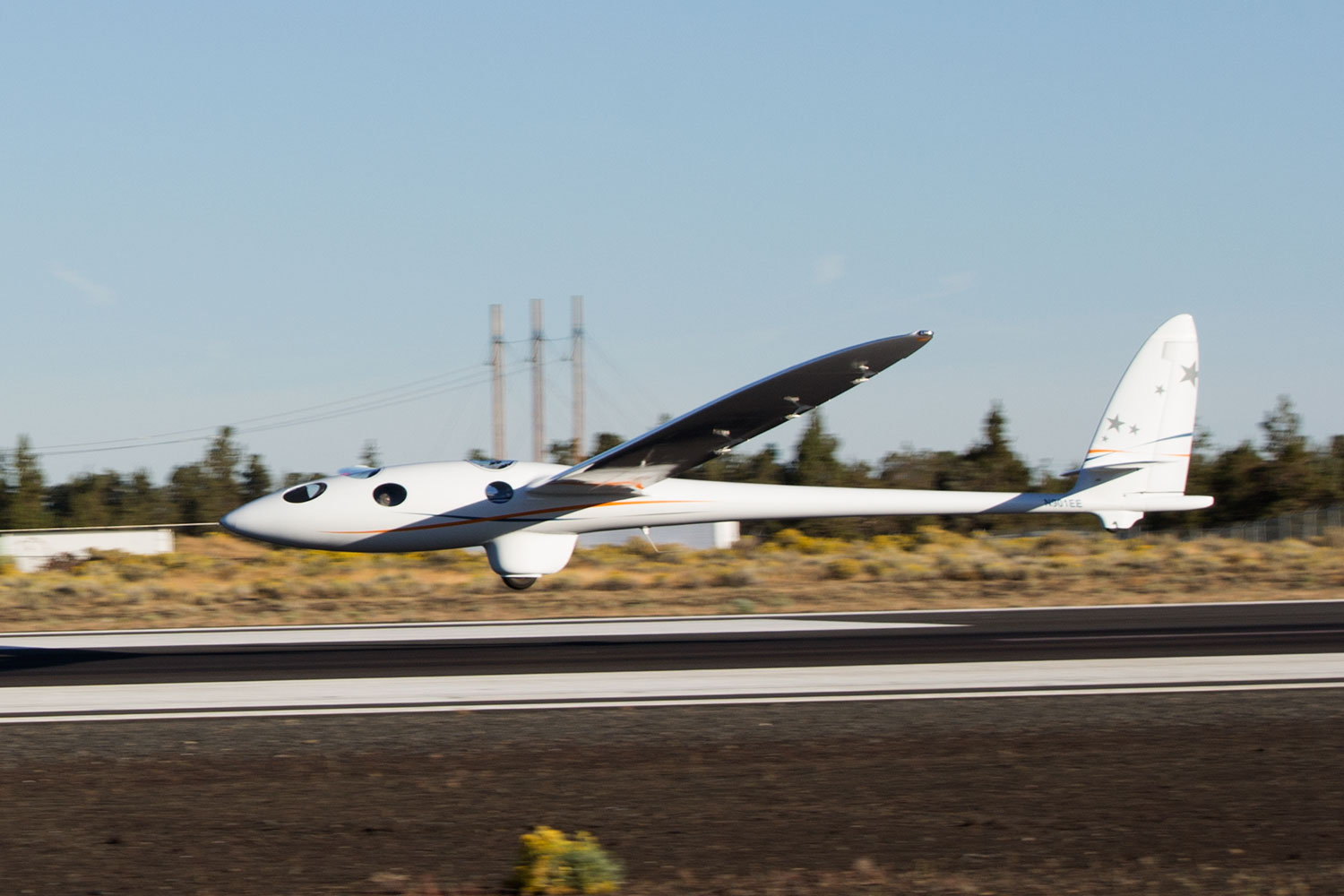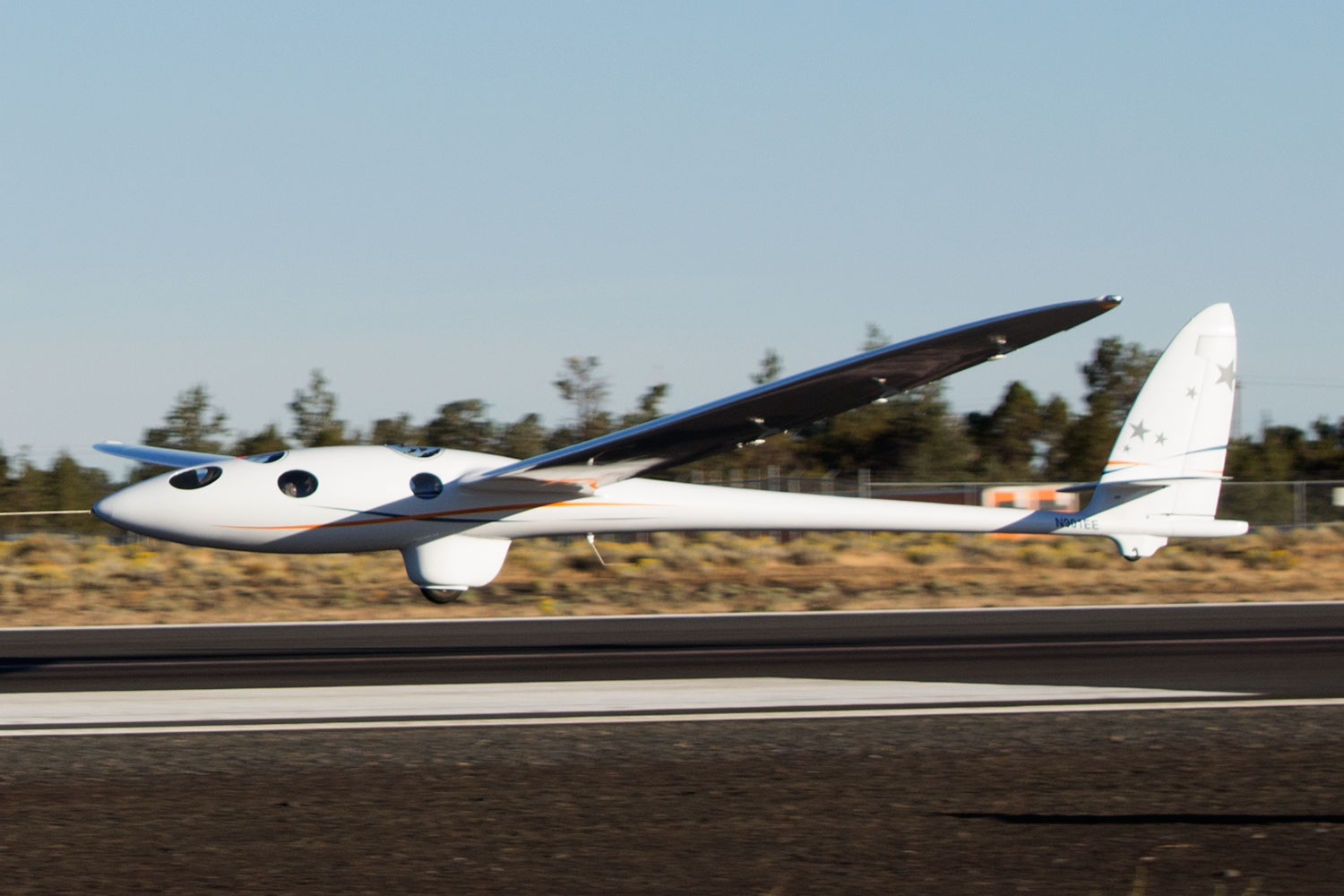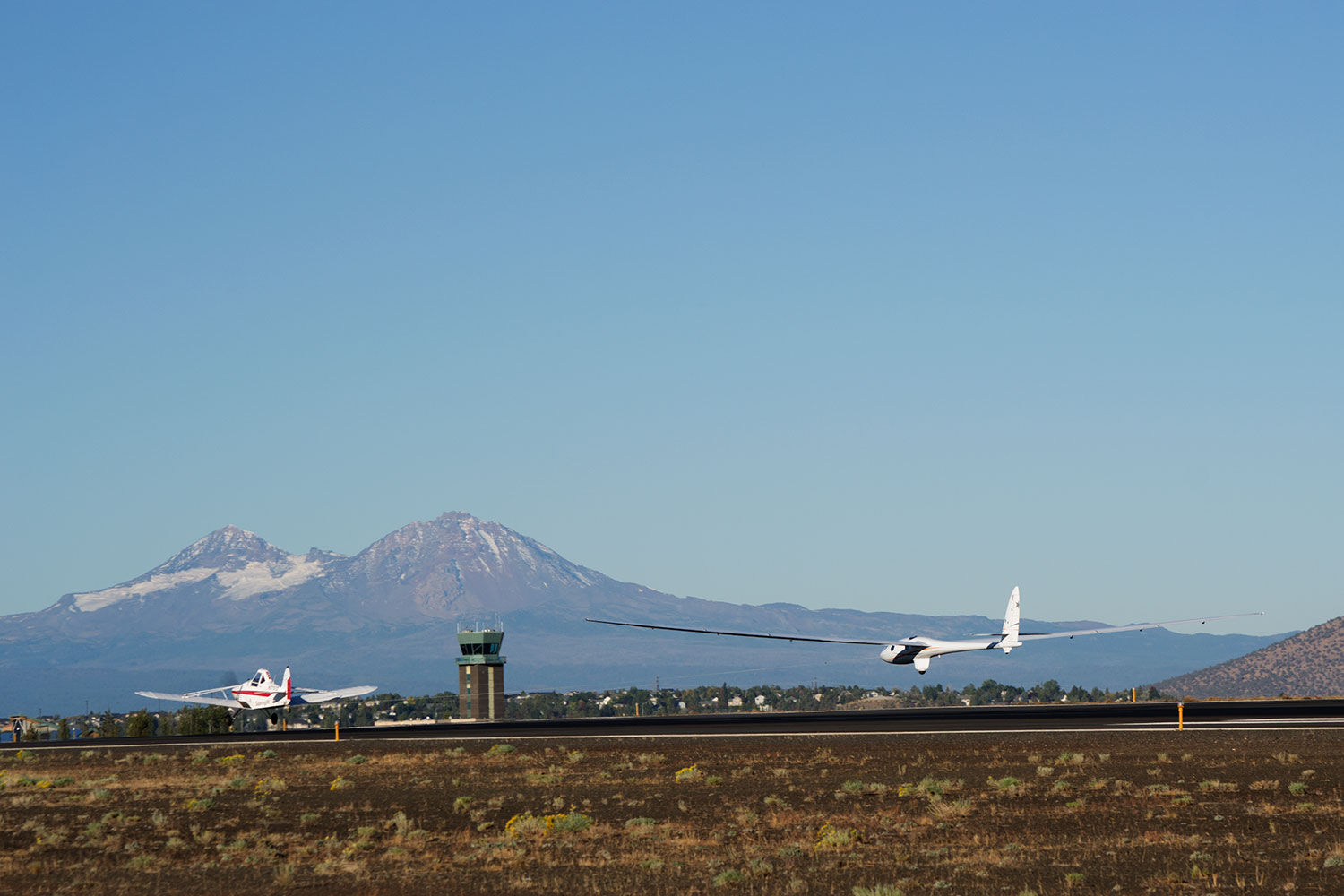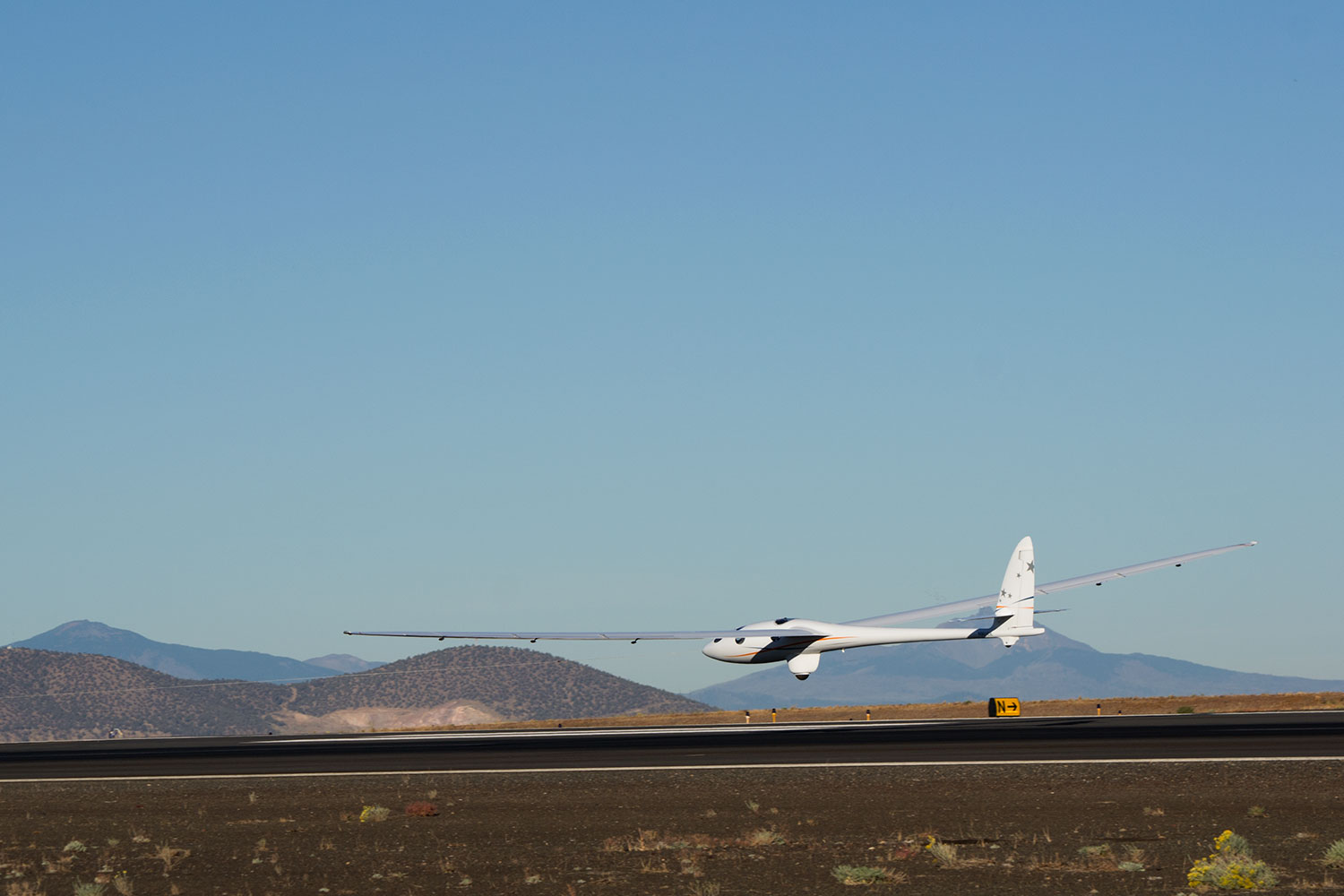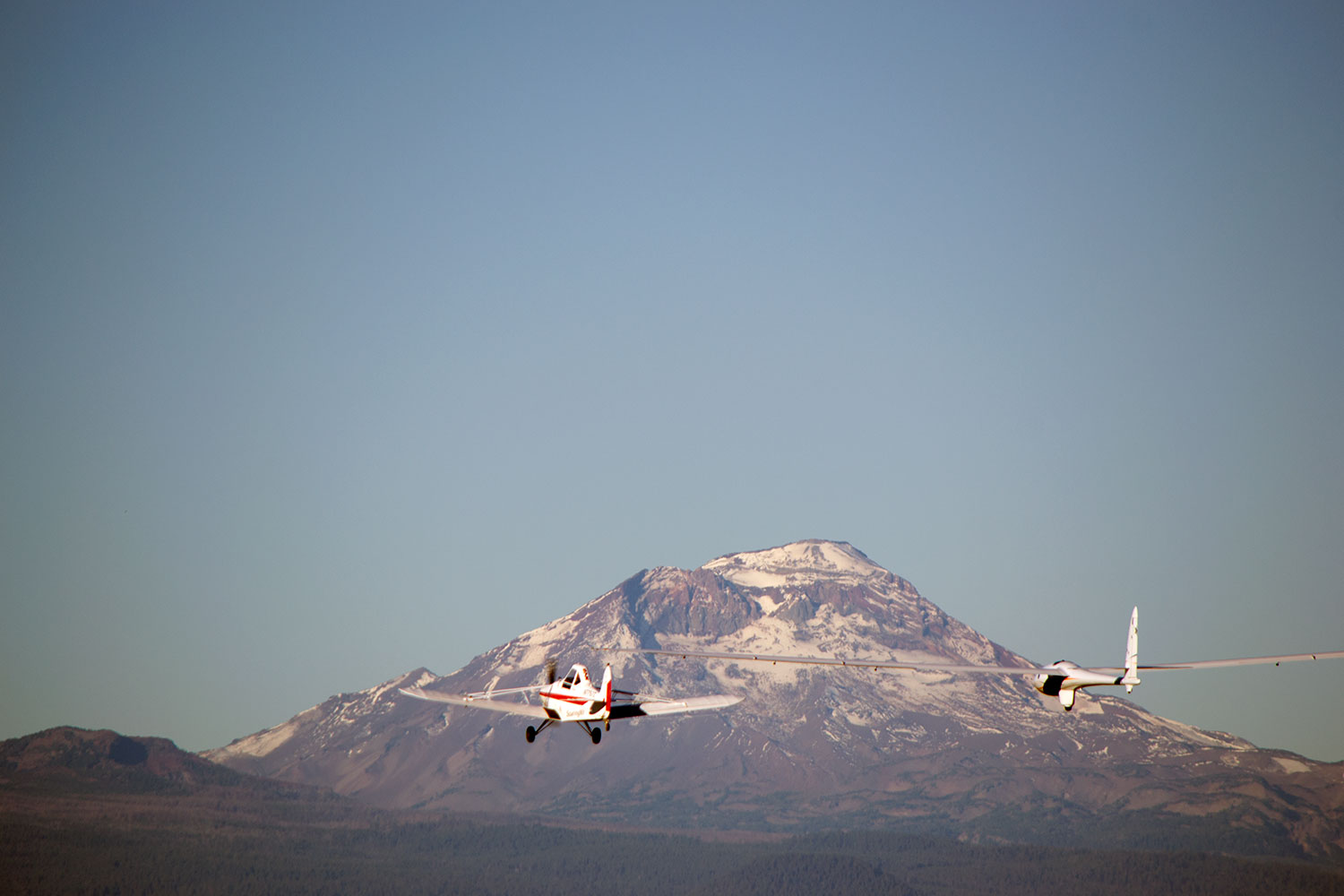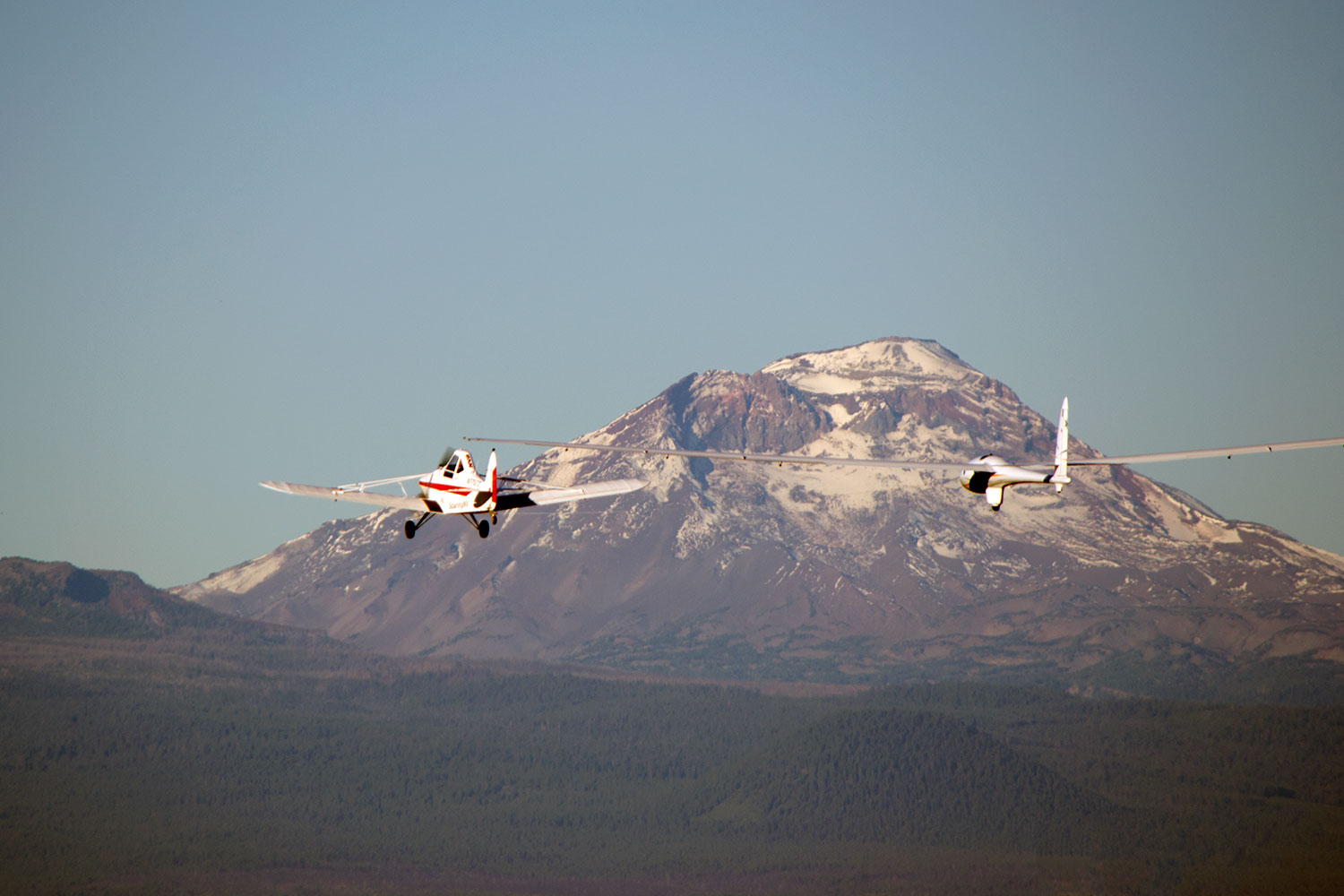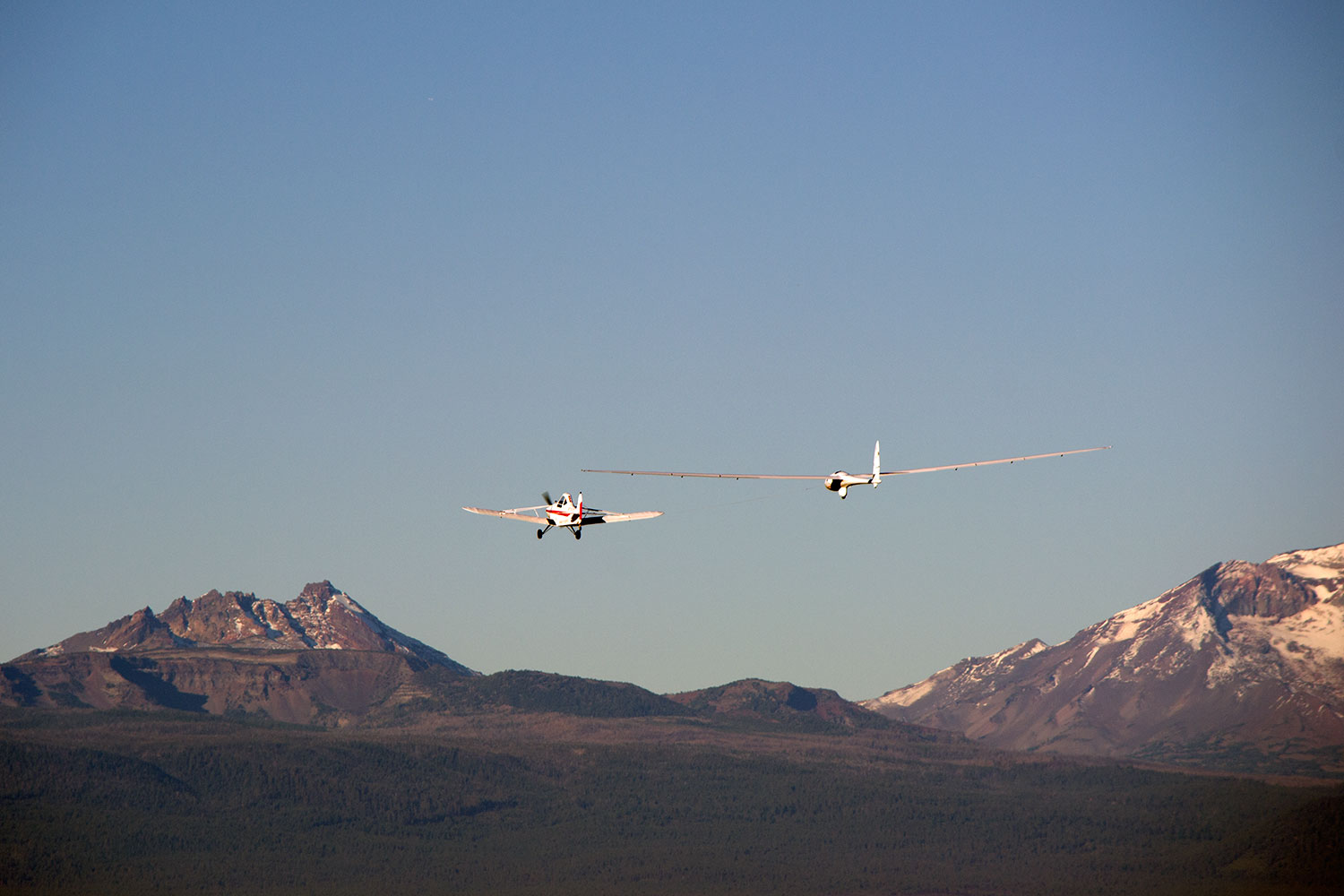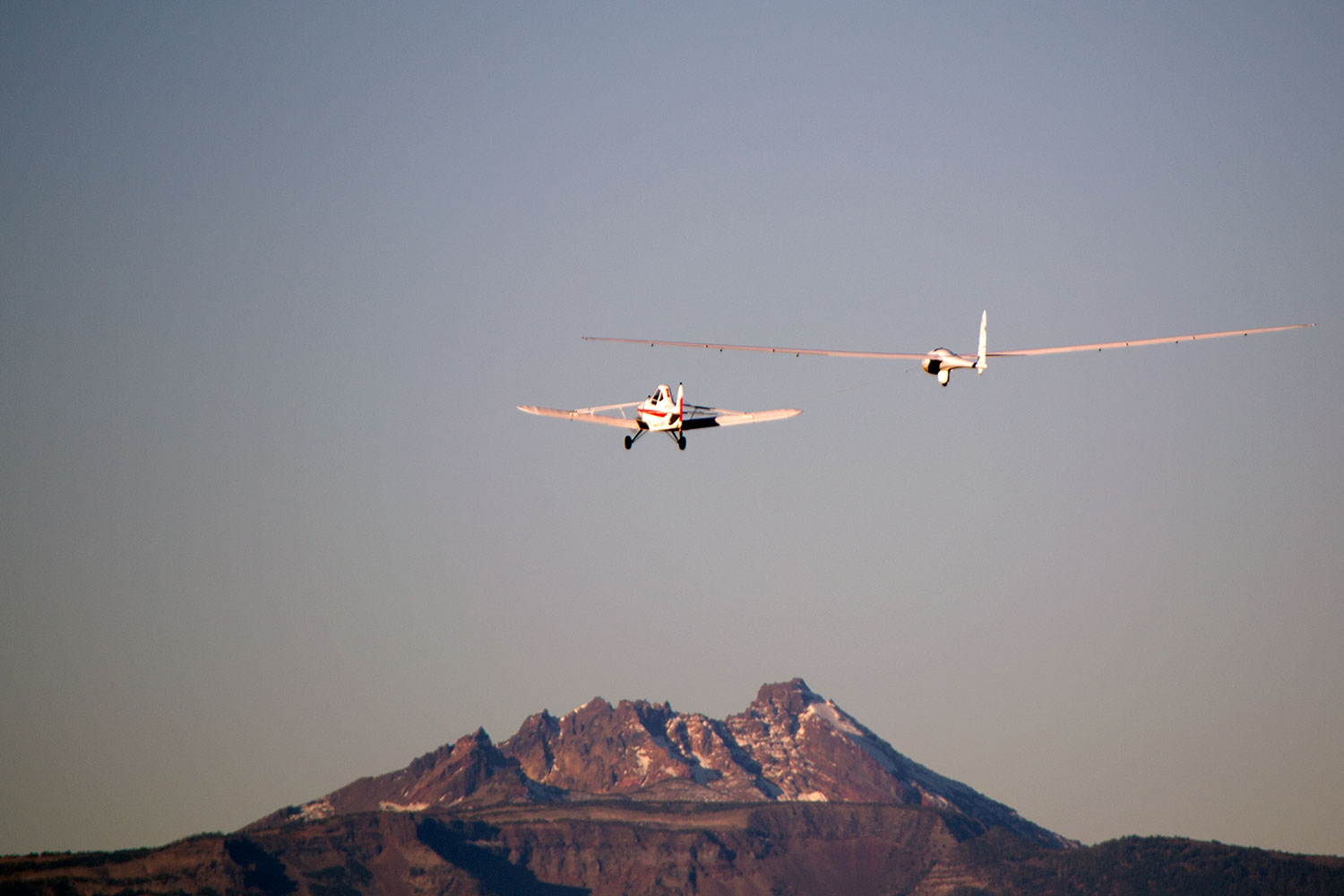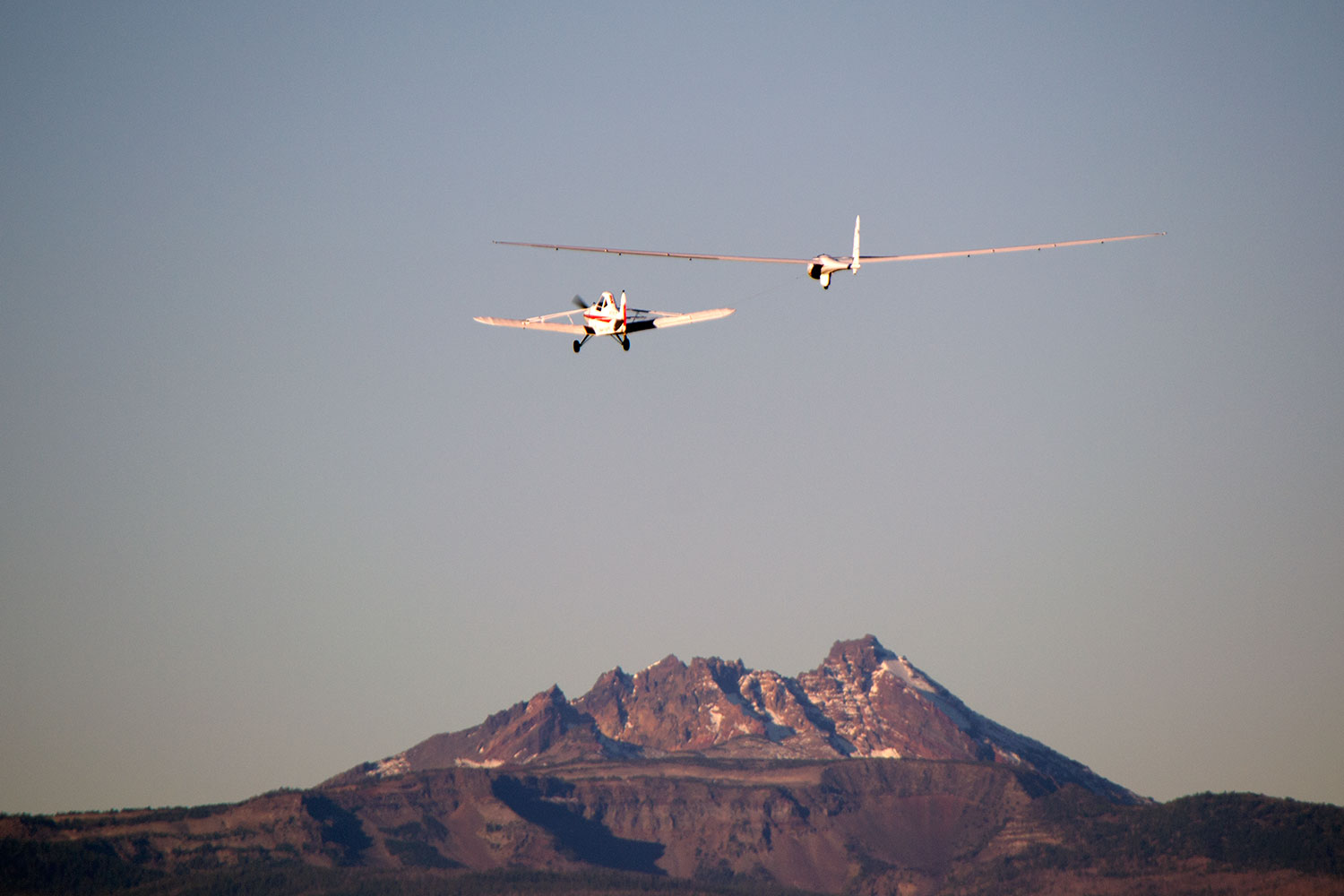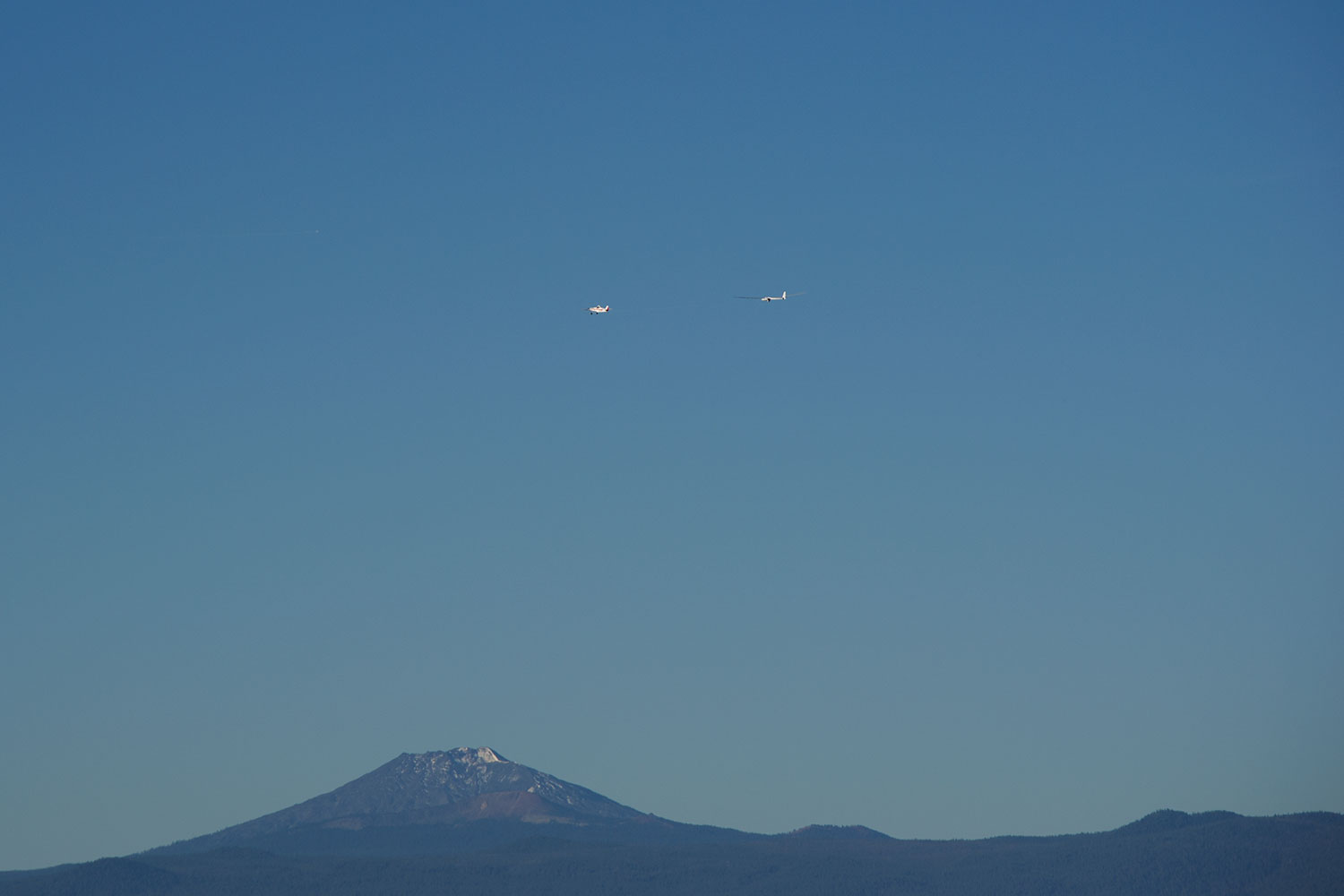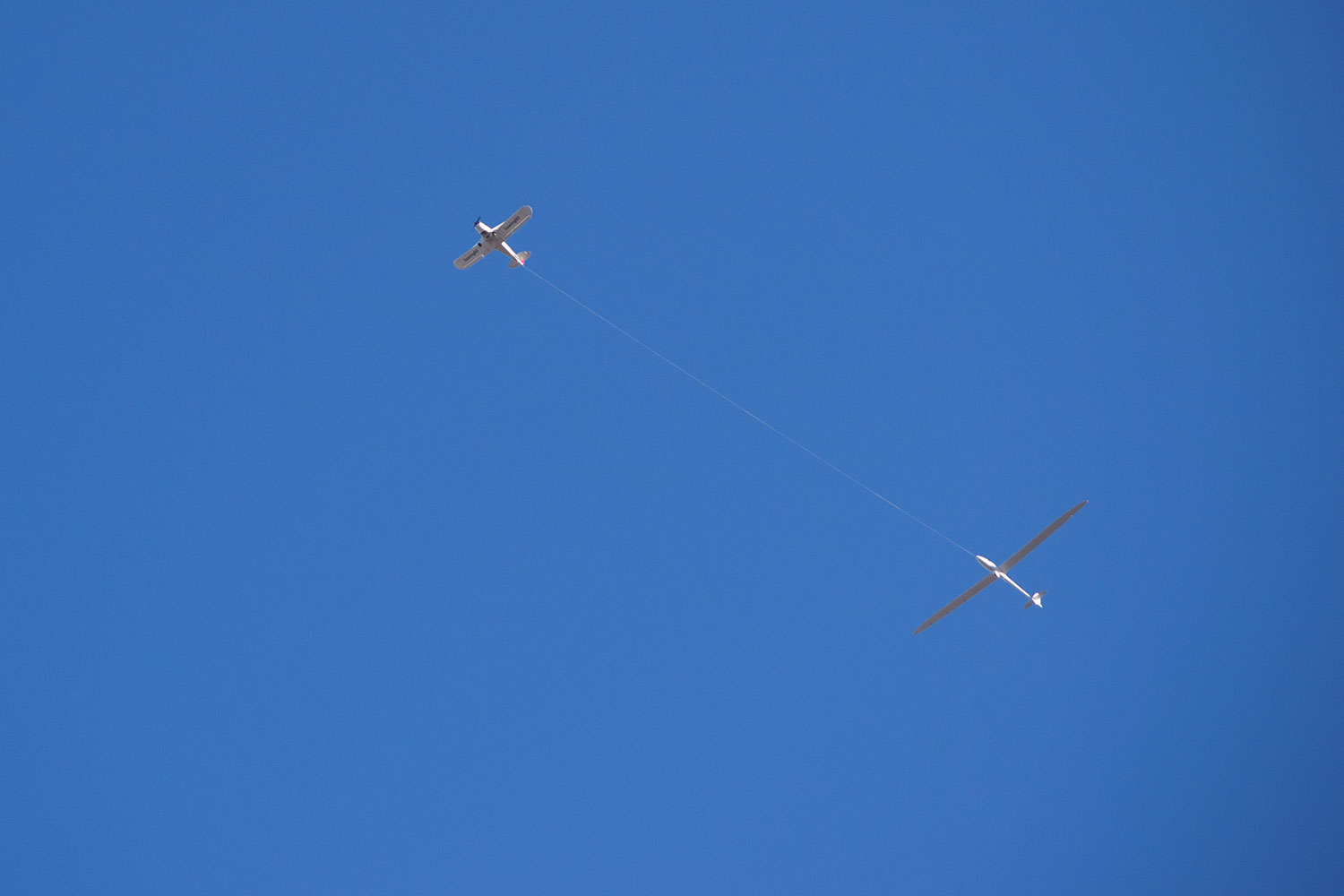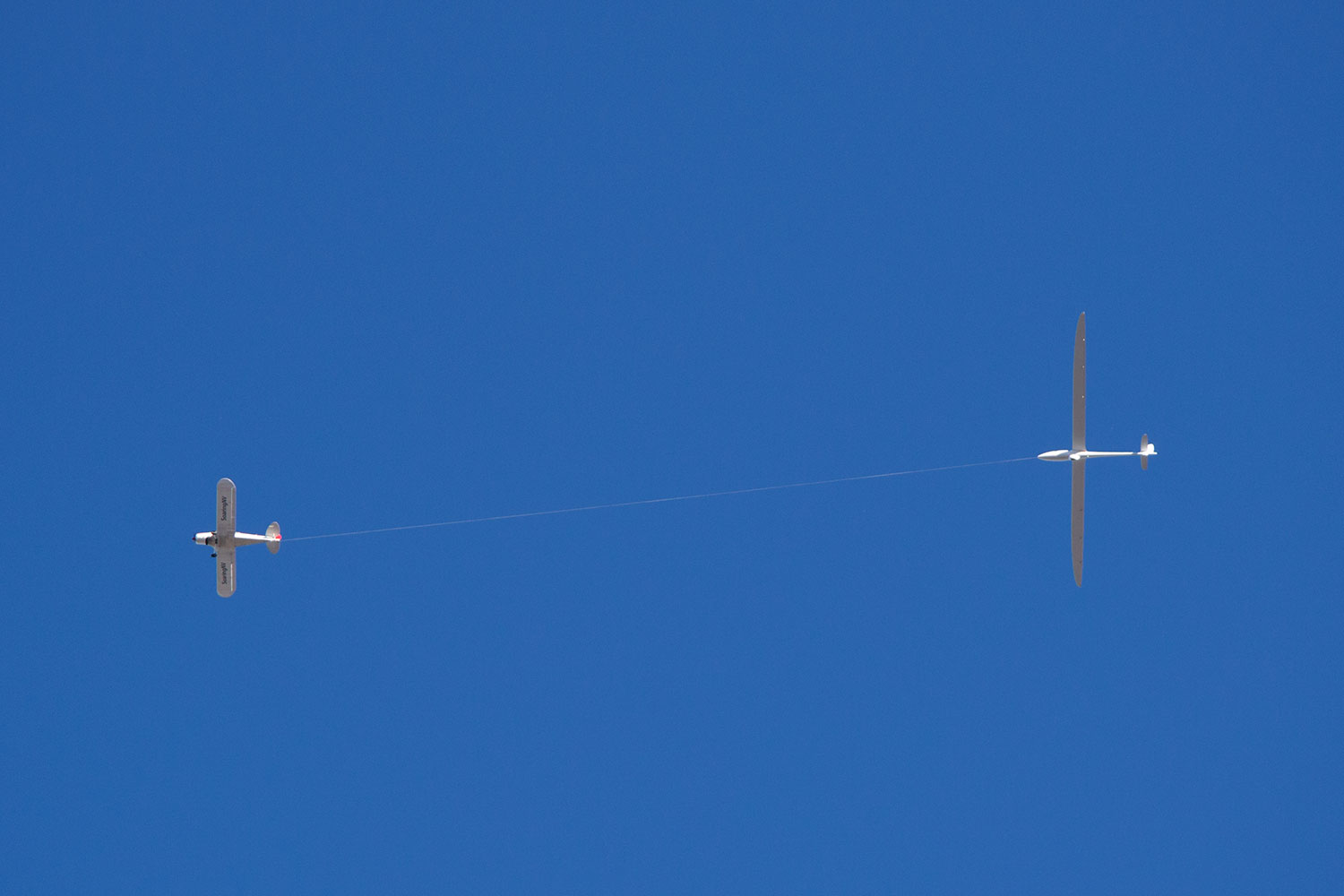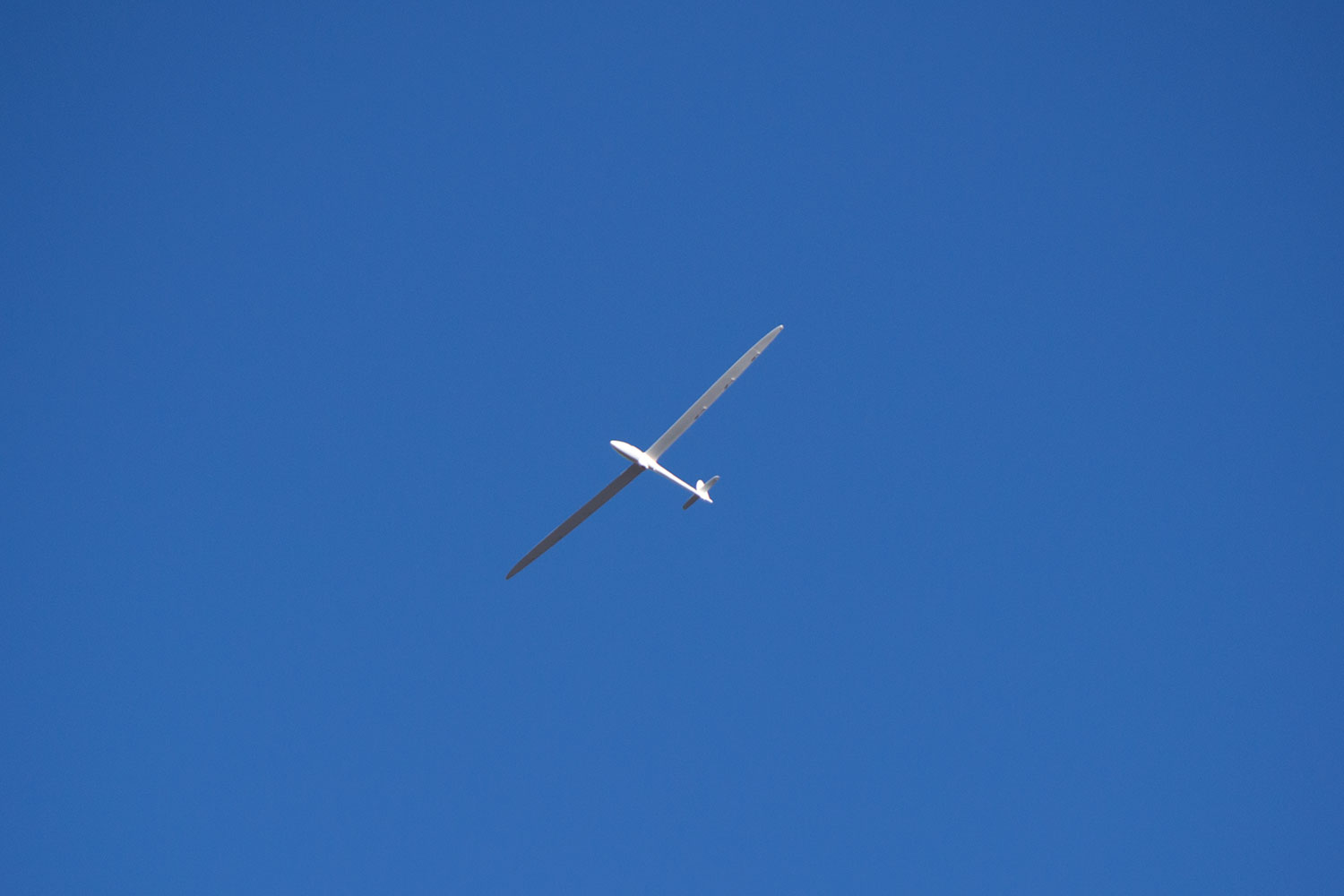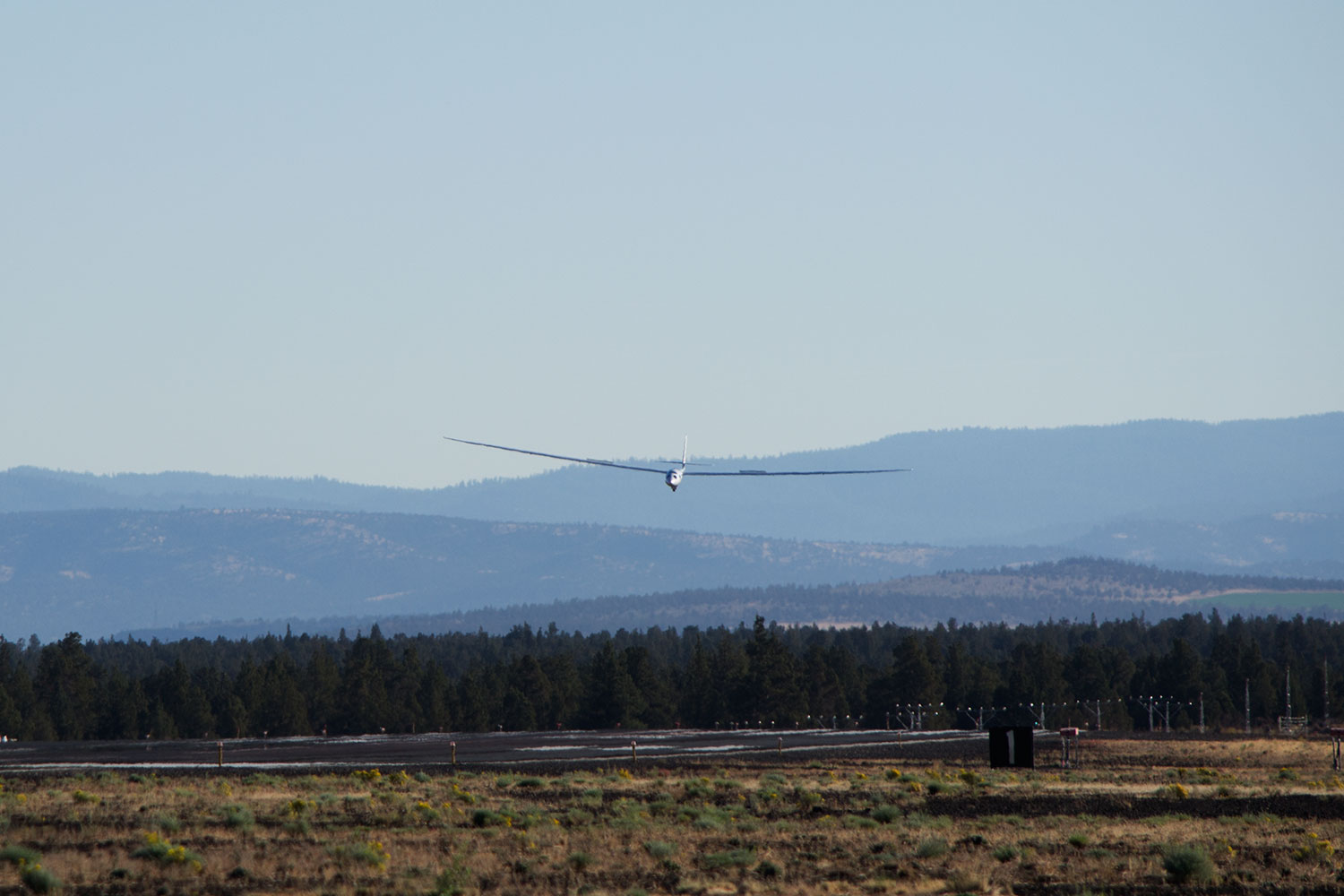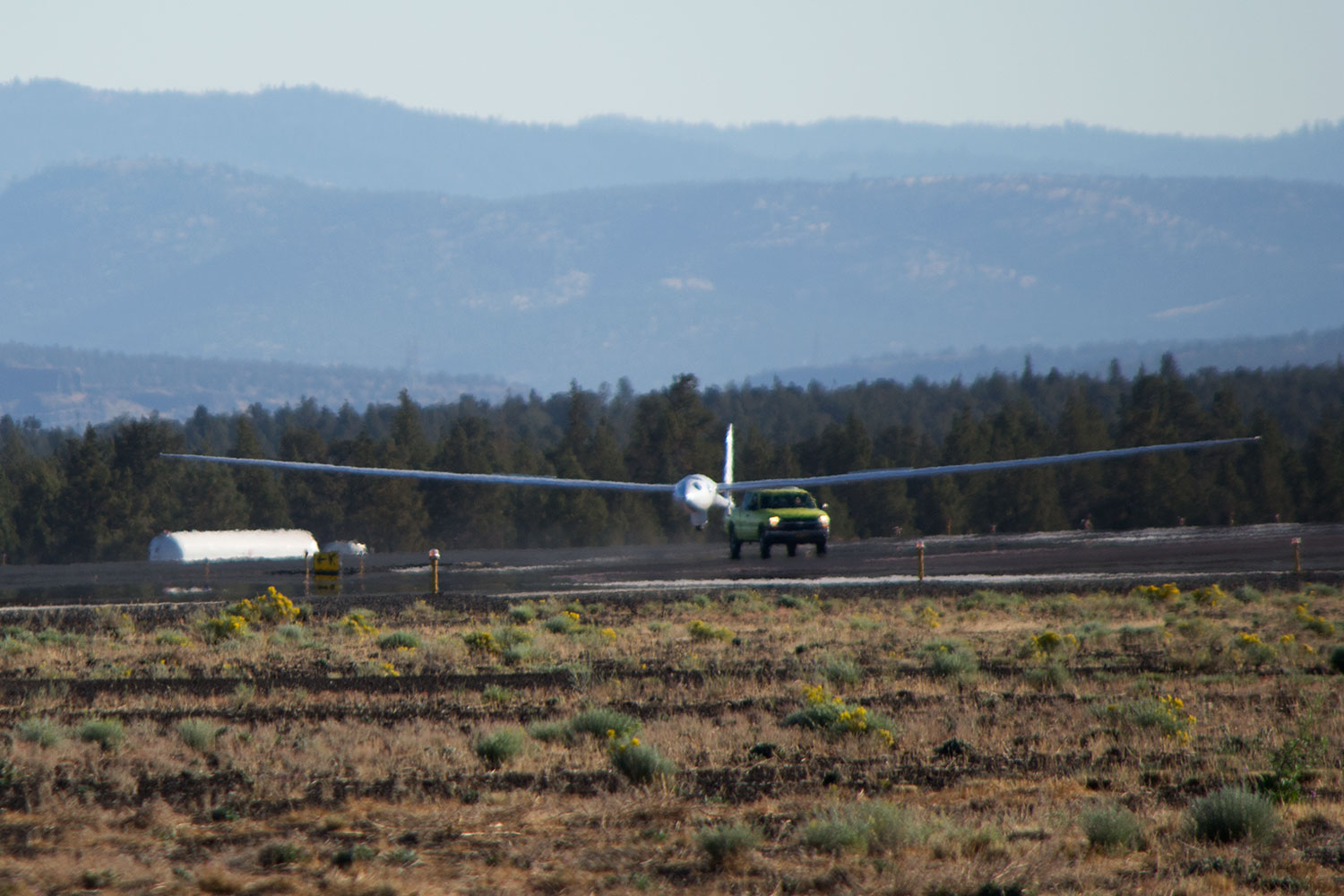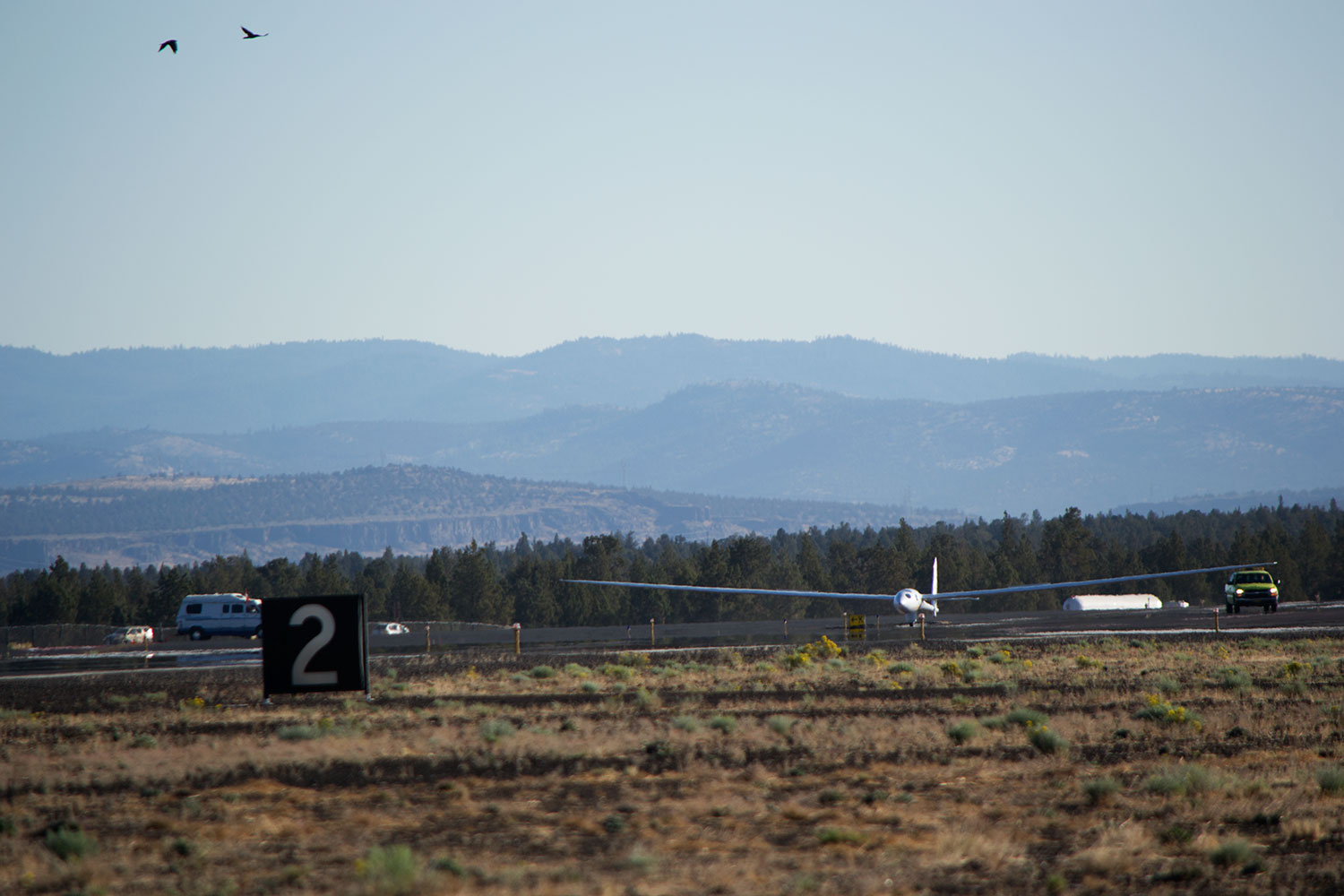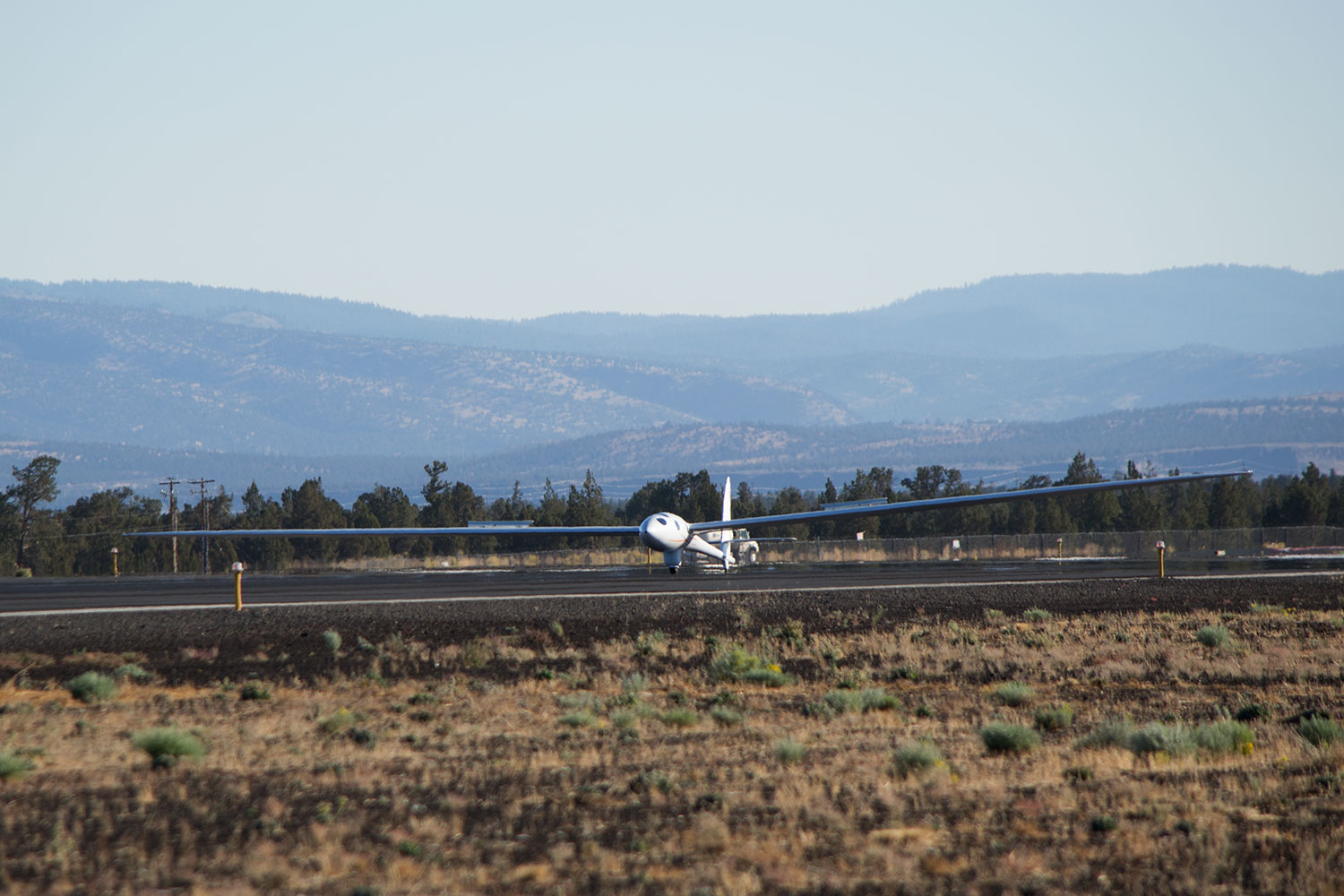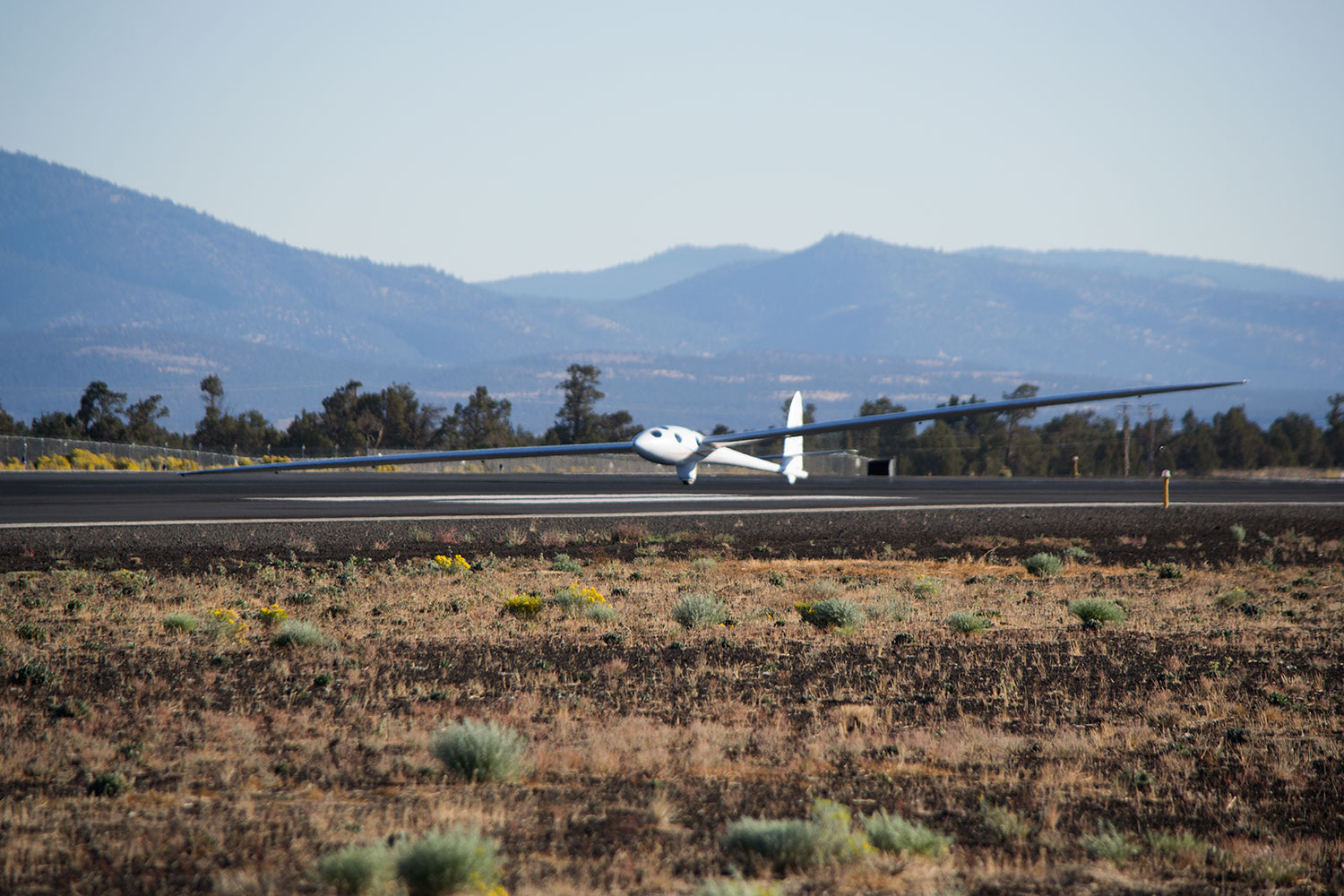If nobody had told me beforehand that the Perlan 2 glider plane was about to make history, I never would’ve guessed there was anything special about it.
As I watched it gently lift off from the runway at Roberts Field, I couldn’t help but think how unremarkable it probably looked to any uninitiated bystanders that might’ve been staring up from the ground. The plane isn’t particularly large; it doesn’t fly very fast; and it barely has enough space to hold two people. Hell, it can’t even get airborne without being towed by another plane because it isn’t equipped with a propulsion system of any sort. To the layman, it probably looked incredibly commonplace and boring — but when you learn that it’s somehow capable of flying to the edge of space without an engine, it suddenly becomes the most fascinating thing around.
After the the plane touched down and everyone swarmed the runway with cameras and microphones, I overheard the co-pilot say that it only reached a height of about 5,000 feet during the test — nowhere near the height it’ll attempt to reach next year in Argentina. Today’s flight was just the maiden voyage — the first of many test runs that’ll happen between now and 2016, when the Perlan team will attempt to dethrone the mighty SR-71 Blackbird and break the current altitude record for winged aircraft. In that mission, the team is shooting for 90,000 feet. For reference, most commercial airliners set their cruising altitude somewhere around 39,000 feet — and they’ve got jet engines to get them there.
Catch a wave and you’re sittin’ on top of the world
So how exactly do you get an engineless plane to the edge of space? To get an answer, I went straight to the world’s leading authority on the subject: Einar Enevoldson — the founder of the Perlan Project, veteran pilot, and one of the world’s leading authorities on stratospheric mountain waves — the massive air currents that Perlan 2 pilots intend to “surf”on to reach 90,000 feet.
Before could even open my mouth to ask the question, somebody behind me in the audience shouted out, “Can you very simply explain stratospheric mountain waves, for those of us who don’t know what they are?”
Ever seen a hawk or a seagull playing in an updraft? Flying a glider in a mountain wave is basically the same thing.
Basically, when strong winds cross over a mountain range and the atmosphere above them is stable, massive waves of air will form on the lee side of the mountain. The wind rushing down the back side of the mountain causes an atmospheric disturbance, and then a couple miles downwind there’s a rebound area, where the air is rising. With the right conditions and a skilled pilot, it’s possible to ride these updrafts high into the upper atmosphere. Ever seen a hawk or a seagull playing in an updraft? Flying a glider in a mountain wave is basically the same thing, just on a much larger scale.
“Unless you’ve flown in a wave, it’s hard to understand the energy that’s available in the atmosphere,” Perlan Project Chief Pilot Jim Payne told me. I’ve seen lift rates of 3,000 feet per minute on some waves — but of course when you see that much lift, there’s a corresponding area where it’s going down just as fast. You’ve got to be careful to avoid those areas, but it’s a phenomenon that’s just absolutely wonderful.”
Thing is, you can’t ride just any old mountain wave into the stratosphere. The common ones simply don’t go that high, and only reach into the middle of the troposphere — but over the past couple decades, the Perlan team has pinpointed where the really big ones happen. If you want to surf the world’s gnarliest mountain waves, you go to Argentina.
According to the Perlan team, Argentina’s low latitude and high mountain ranges make it an ideal location for stratospheric waves to form. The science is dizzyingly complicated, but all you really need to know is that a confluence of different atmospheric events take place over the country’s mountain ranges during the winter months, which together allow some mountain waves to propagate much higher into the atmosphere than they normally would.
Back in 2006, Perlan Project founder Einar Enevoldson and adventurer Steve Fosset proved that these waves can reach incredible heights by taking the Perlan 1 glider up to 50,722 feet — and they would’ve gone higher too, had their jumpsuits not inflated in the high altitude and made it difficult to fly the plane. That was the moment when they decided to build a glider with a pressurized cabin, and the Perlan 2 project was born.
For science; not just for the record books
If the Perlan 2 team achieves its goal and breaks 90,000 feet, it’ll secure its place in the record books. But mere record breaking isn’t the goal of the mission — there’s a much more noble purpose behind all this.
“There’s still wonderful adventures and discoveries to be made. The sky is not the limit. The sky is where we live.”
Figuring out this stuff is important, because many of our current climate models are very crude, and assume that there’s very little interaction between the troposphere (lowest layer of our atmosphere) and the stratosphere (the layer above it). So in order to build a more complete climate model and gain a better understanding of how humans are affecting climate change, we need better atmospheric data from the tropopause.
The thing is, gathering information from the turbulent parts of the atmosphere is tricky. Contrary to what you might assume, you couldn’t get the job done with a sensor studded weather balloon. “A balloon gets blown downwind,” co pilot Morgan explained. “It can’t hover in place; it can’t stay in one spot for two or thee hours; and it can’t take a perfectly vertical profile of a mountain wave. We think in this rising part of the wave is where most of the important processes are occurring related to ozone destruction, so we want to get lots of samples in that range.”
Gathering new atmospheric data is the main goal here, but it’s really just the beginning. No aircraft has ever flown higher than 82,000 feet, so while the Perlan 2 is up there gathering atmospheric data, it’ll also provide us with valuable information on how winged aircraft behave in the upper atmosphere. When you’re up that high, the density of the atmosphere is considerably lower, so planes need to fly faster to generate enough lift, and their wings behave differently. Furthermore, in terms of density, the atmosphere up at 90,000 feet is extremely similar to the density of the Martian atmosphere, so any insights that the Perlan crew gains will be invaluable when it comes time to build aircraft that can fly on Mars.
“The important thing to remember is that not everything has been discovered,” Enevoldson told the audience. “There’s still wonderful adventures and discoveries to be made. Many of us tell us tell people that the ‘sky’s the limit’ — but the sky is not the limit. The sky is where we live.”
